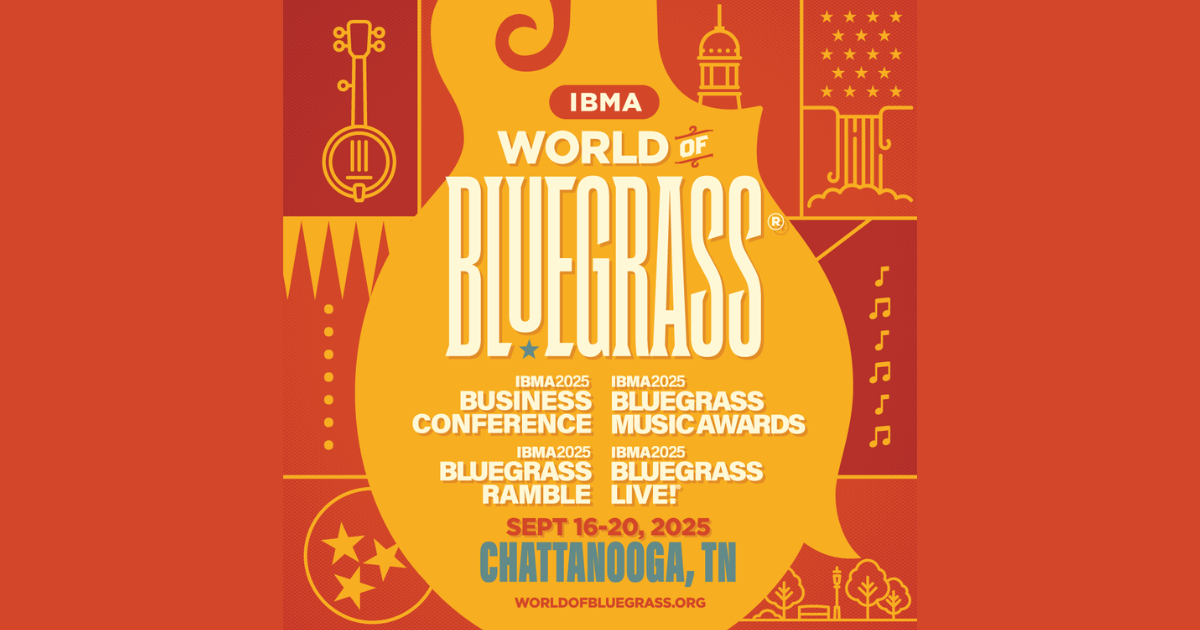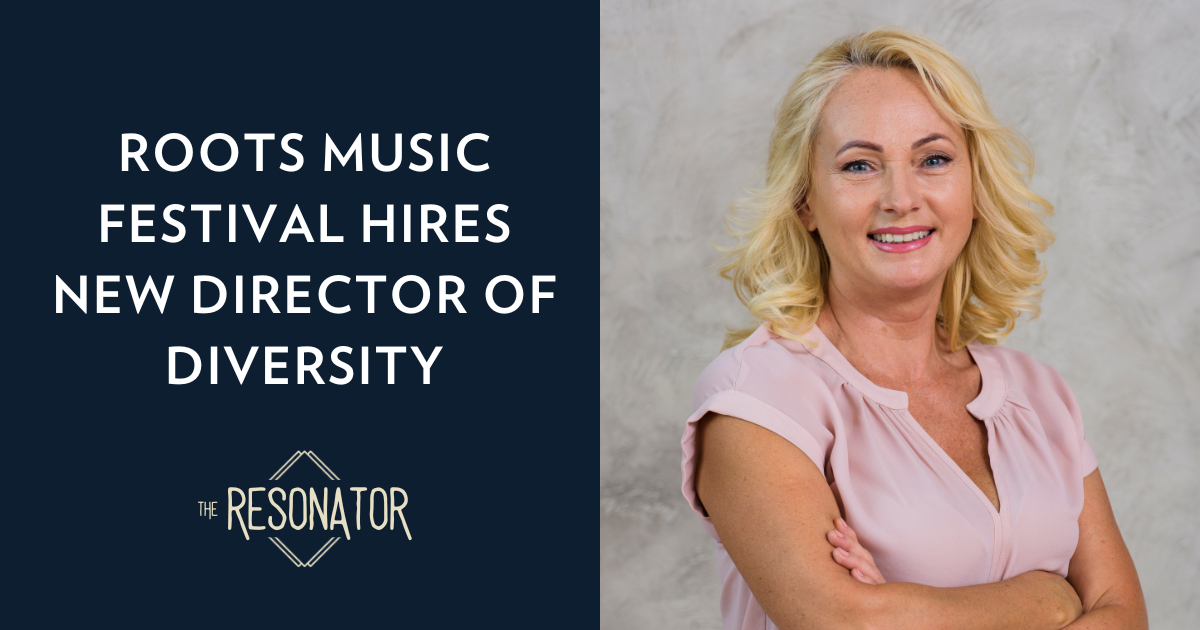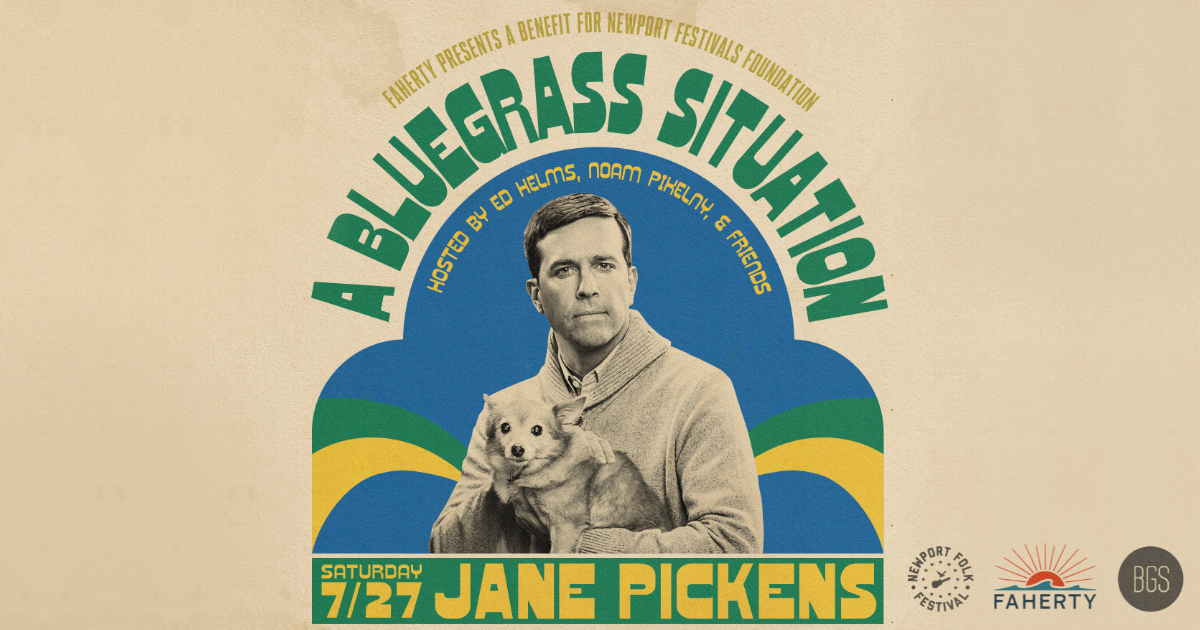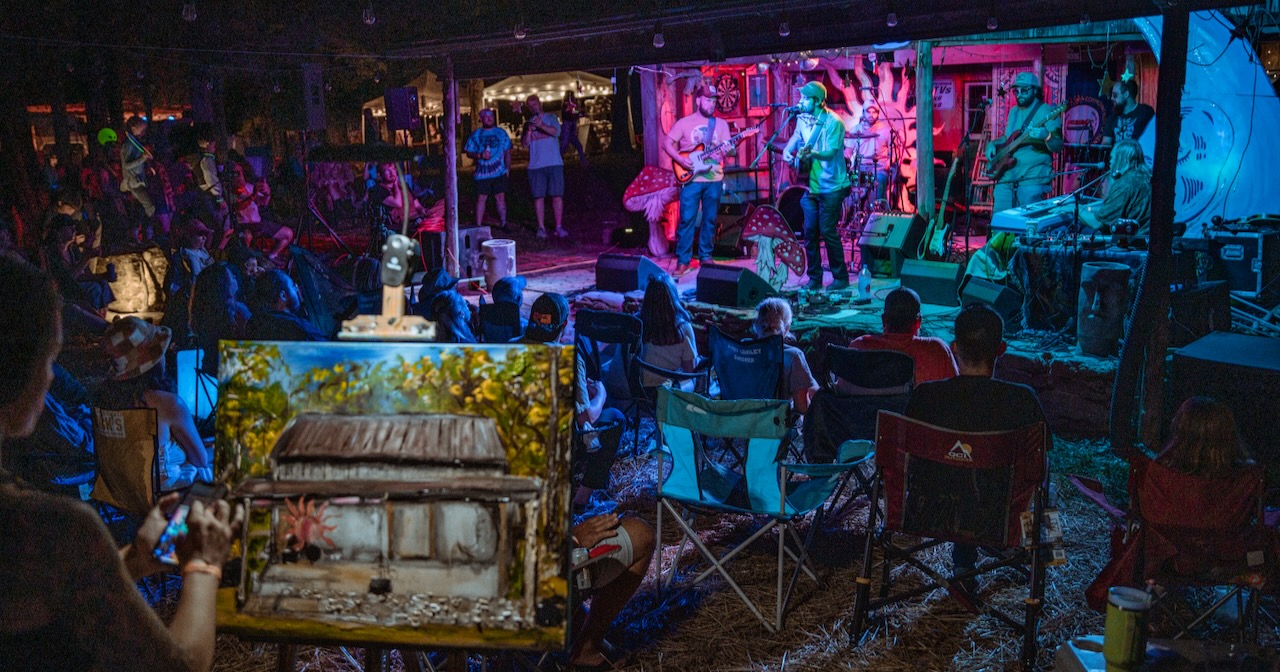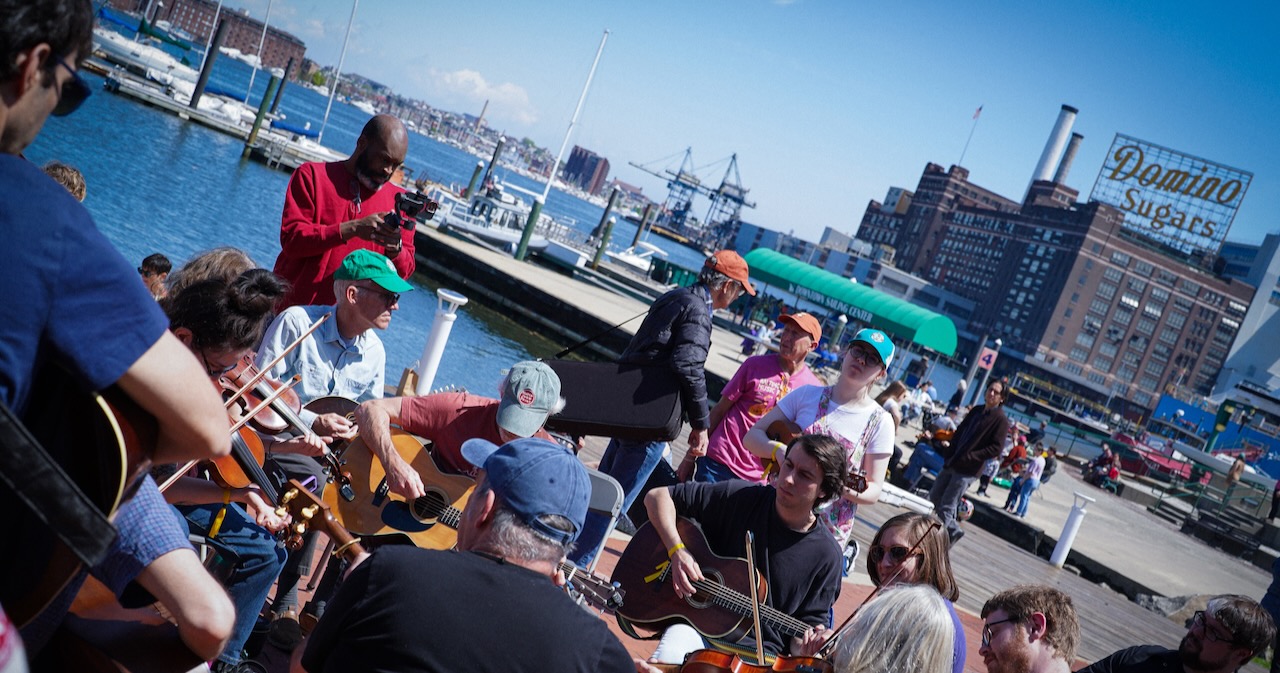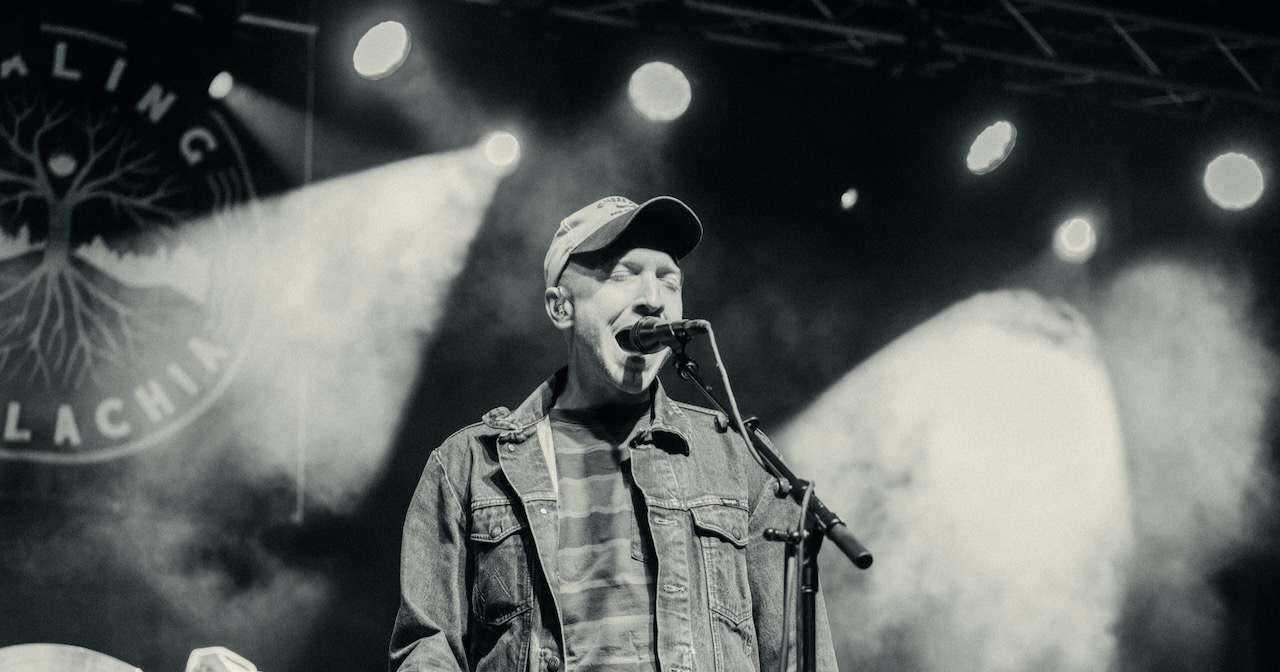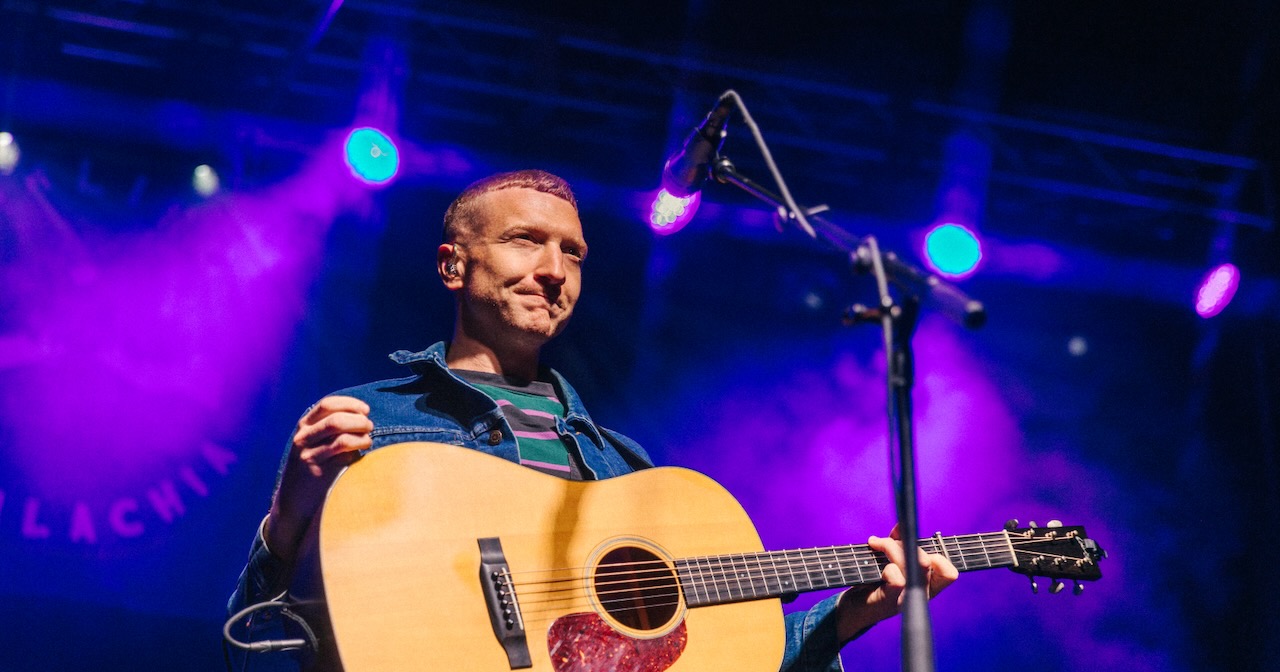Tag: Music Festival
Roots Music Festival Hires New Director of Diversity
DAVENPORT, IOWA – The Quad Cities Roots Festival announced today that it has hired its first-ever Director of Diversity, 55-year-old Karen Van der Sloot.
“I’m absolutely over the moon,” Van der Sloot said, stirring a pot of her famous chili in her suburban kitchen. “Diversity needs a facelift. Because every face is beautiful, especially when it’s smiling!”
While many DEI programs across the country have seen funding cut or been permanently shuttered, the Quad Cities Roots Music Festival is doubling down on its commitment to diversity with this groundbreaking hire.
“Karen is someone who makes everyone feel included. Even people who were already included feel more included because of Karen’s relentless inclusivity,” said a festival spokesperson.
Despite having no background in roots music or diversity initiatives, Van der Sloot believes her experience as a mother of four will offer a fresh perspective to a festival often criticized for its homogeneity.
“Listen, if you’ve ever tried to get a teenager to put down their phone and eat the same thing as the rest of the family, you know that’s the real diversity work,” she smiled. “I always say, ‘We tried democracy, but I’m not gonna make a whole new meal for one person who suddenly says they’re vegan. Mama bear don’t play that game!’”
Her vision for diversity in roots music? “Instead of diversity, I’ve been saying we need melange-ity – a little mix of everything. Like a good chili. Melange-ity means more than just one flavor. We need the full ‘thang’ – beans, hamburger, chili powder, maybe even a little corn if you’re feeling wild!”
For Van der Sloot, that even means getting a mix of ideas, like soliciting programming feedback from her assistant, Dr. Akilah Jessup-Moore. “Did you know she has a doctorate in ethnomusicology from Duke? Such a smart cookie.” Moore could not be reached for comment.
Festival Executive Director – and Karen’s husband – Kevin Van der Sloot also chimed in. “Karen’s been a real trooper. She’s thrown herself into this role 100%. Plus, I think she needed something to do after our oldest left for college.”
Though music acts are still being confirmed, festival headliners will include the Bettendorf Boys Choir, pop-reggae group UB40, and local favorites The Muddy Walters, a blues band comprised entirely of retired dentists.
Greg Hess is a comedy writer and performer in Los Angeles. His work has been featured in The American Bystander, The Onion, Shouts & Murmurs, Points in Case, and he cohosts the hit satirical podcast MEGA.
ANNOUNCING: A Bluegrass Situation with Ed Helms & Noam Pikelny at Newport Folk
A decade after BGS’s first appearance at Newport Folk Fest, we’re thrilled to be returning to Rhode Island for A BLUEGRASS SITUATION, a special late night aftershow hosted by Ed Helms and Noam Pikelny on Saturday, July 27.
We’re putting together an evening of old school bluegrass and folk favorites that we’ll be playing with some long time friends and very special guests. Won’t you join us?
Tickets go on sale this Thursday, 6/27 and all proceeds benefit the Newport Festivals Foundation. More information available here. Make plans to attend Newport Folk Festival here.
Camping at Bonnaroo? Beat the Heat By Booking a Luxury Mansion and Driver
MANCHESTER, TN – Bonnaroo is here, and what better way to experience your favorite national brands and a little music than by camping out with thousands of strangers. But after pitching your tent in the swampy hellscape of Tennessee, experiencing the serenity of a fetid port-a-potty, and meeting your new influencer neighbor, “Kylie B,” living it up in her $4,000 glamping tent, you might be craving some creature comforts of your own. Here’s how to secure the ultimate Bonnaroo experience that’ll make you the envy of the unwashed masses before human-being-turned-cigarette Post Malone even takes the stage.
FUNDRAGING
You’ve already blown your firstborn’s college fund on festival passes, so it’s time to get creative with money. Start by hitting up any old roommates who stumbled into lucrative STEM careers while you were exploring your passion for Russian literature, then consider who among them you might have particularly damaging kompromat on. Your roommate-turned-pediatrician Owen really doesn’t want you to email his wife the Polaroids you have of “Turtle Night” back at Sigma Chi? It’s probably best that he just Venmo you a few thousand dollars in your time of need so that they never see the light of day.
SECURING PRIMO DIGS
Booking sites like Hotels.com or Airbnb can be expensive, and during festival season, availability is limited. Instead of stressing out with a last-minute scramble to find a place to your standards, try heading straight to Google Earth. With satellite technology, you can easily see which nearby McMansions look empty during the summer months. Nervous about trespassing? Bone up on Tennessee’s excellent stand-your-ground laws. Once you’ve established residency, even a returning homeowner can be escorted off their own property using any means necessary.
EATING LIKE A ROCKSTAR
Festival food is notoriously overpriced and underwhelming. But the headlining artists at these festivals come with specific riders that all but guarantee a yummy backstage spread. Since anyone under 5’6″ with a shaved head and the confidence of a middle-aged white man can pass for Flea, you’re virtually assured a seat at the table once you whisk past security into the Red Hot Chili Peppers’ dressing room. Over 5’6″? Throw on a backward baseball cap and cosplay as drummer Chad Smith or his lesser-known doppelgänger, Will Ferrell.
DRIVING IN STYLE
Did you know that Tesla owners get roadside assistance anywhere in America? Of course, you don’t own a Tesla, but your ring-light-bathed glamper neighbor Kylie B sure does. A standard box cutter will make quick work of the tires on her new Model S. When the tow truck arrives, simply decline the repair and ask them to drop you at your new house. Your compelling tales of every performance you’ve witnessed over the weekend are sure to win over the driver, so at the festival’s end, don’t hesitate to make him take you all the way back to your old life in Iowa and your wistful year-long wait before you can do it all again.
Greg Hess is a comedy writer and performer in Los Angeles. His work has been featured in The American Bystander, The Onion, Shouts & Murmurs, Points in Case, and he cohosts the hit satirical podcast MEGA.
DISPATCH: An Intimate and Essential Kentucky Festival, Sleeping In The Woods
There’s something in the water in Kentucky that’s conducive to making great songwriters, and the second annual Sleeping In The Woods Festival — held May 17-19 in Monticello — was no exception.
Hosted by artist and songwriter Nicholas Jamerson, the gathering has quickly become a can’t-miss attraction featuring a mix of the Commonwealth’s most revered songwriters, as well as the ones they’ll eventually be handing the reins off to. The setting of Hidden Ridge camping — a birch tree-covered campground nestled along Lake Cumberland — further elevated its intimate feeling (in addition to providing a canopy of shade during a deluge of rain Friday).
However, despite Mother Nature’s best efforts on day one, the few hundred in attendance didn’t have their spirits dampened by the soggy forecast, instead filling out a massive tent by the festival’s second stage for a songwriter round to open things up. Featuring Ryan Anderson of Louisville rock band Bendigo Fletcher alongside Jamerson, in a last minute change of plans, the two opted to debut entirely new and unrecorded music during the hour-long round, further putting a microscope on their superb songwriting, the stories behind them, and the creative process at an event built for exactly that. Outside of rain pattering on the tent above, you could hear a pin drop. Even though fans weren’t familiar with these songs, it was obvious they were captivated by the occasion, a sign of the duo’s songwriting prowess and power of getting caught up in the moment.
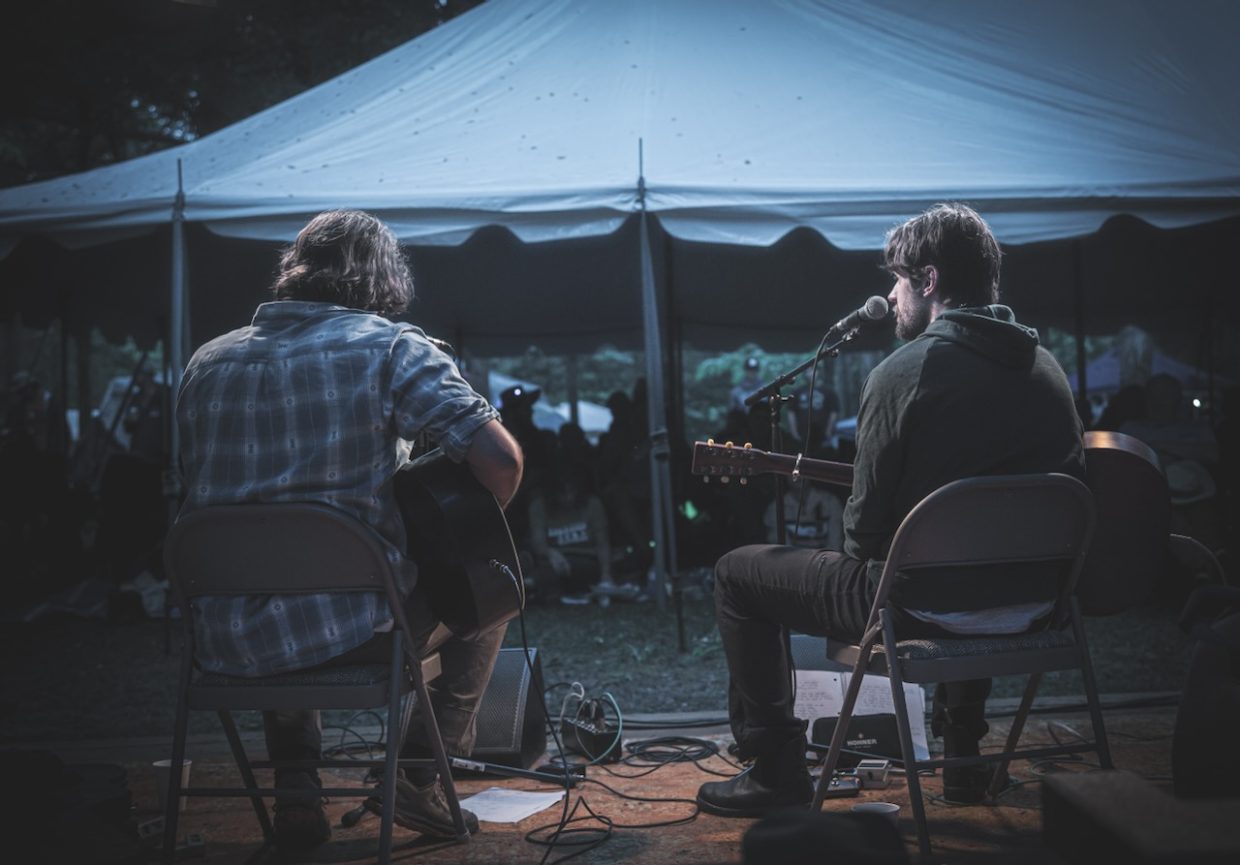
“Getting to play all new songs with Ryan Anderson felt like the perfect way to set the tone for the festival,” Jamerson tells BGS. “I’ve admired him so getting to share that space meant a lot.”
Following the round of new material was one of the festival’s few non-Kentucky acts, Cristina Vane. As a result I found myself talking with countless folks as she set up about what to expect from the electrifying slide guitar and banjo picker, but even my best of introductions couldn’t have prepared them for the show she gave them.
Working as a trio with drums and bass guitar, Vane tore through originals like “Blueberry Hill” and “Small Town Nashville Blues” alongside new songs like “You Ain’t Special” and sweltering covers like James McMurtry’s “Choctaw Bingo.” Through it all, she had the crowd at her will, seemingly unaware of the rain falling around them, including myself.
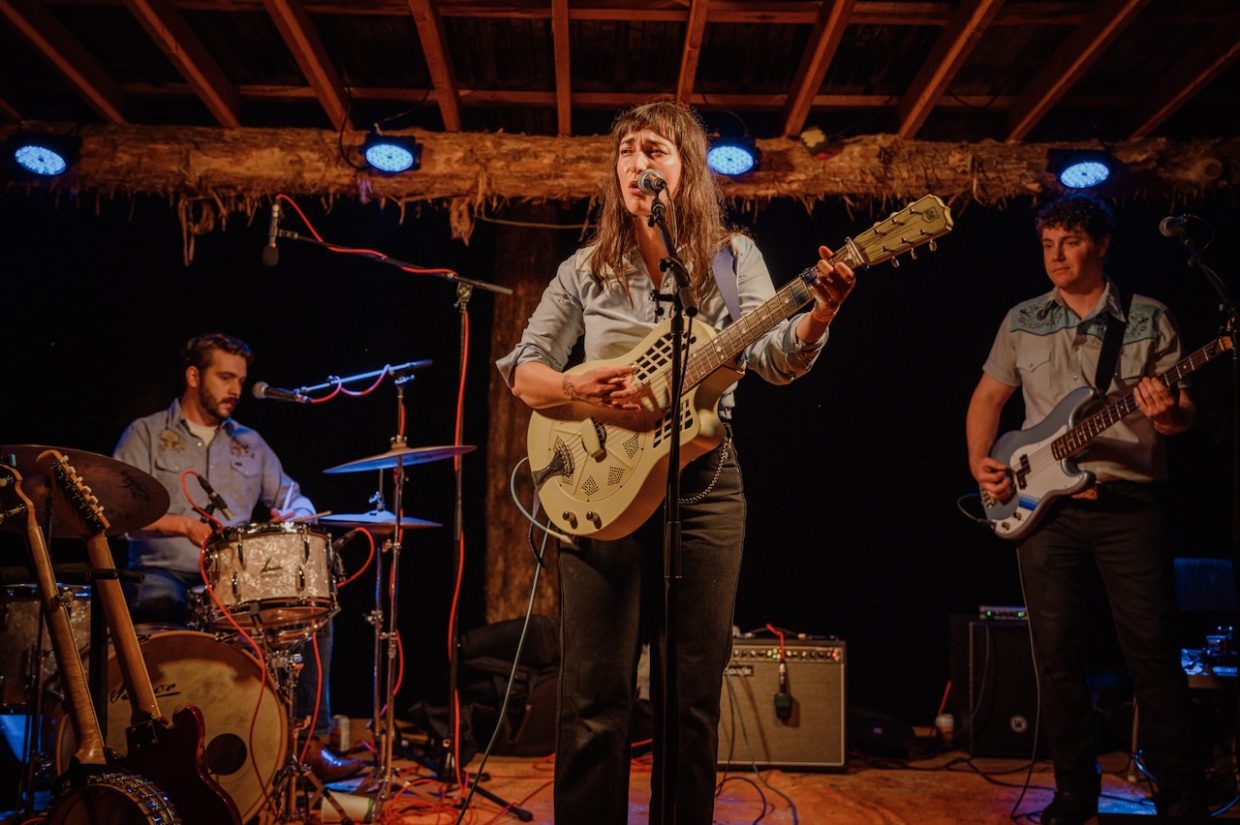
Although I’ve seen Vane perform several times, each occasion always feels like a first due to the versatility of her band setups. I’ve seen her play solo, with a full electric band, a full bluegrass band, and now as an electric three-piece; each show feels so different. Her songwriting is built for a festival like Sleeping In The Woods, but how she’s able to plug and play, presenting her music in many different ways is what truly sets her apart. Fans on Friday seemed to agree, giving Vane a ferocious standing ovation at her set’s conclusion, something that even she didn’t seem to expect.
“It was cool seeing people react to acts they hadn’t seen,” shares Jamerson. “I felt like Cristina Vane, The Dick and Tammy Show (Justin Clyde Williams and Tyler Hatley), and Josh Slone all made really huge impressions on people.”
Another out-of-state act integral to the weekend was Rachel Baiman. The Nashville-based multi-instrumentalist was everywhere over the three-day event, starting with a songwriter workshop she led to begin Saturday’s musical menu. Attended by around 50 under the tent that Cristina Vane rocked out the night prior, the croissant-fueled workshop saw Baiman working with fellow songwriters and aspiring ones alike to take internal conflicts and turn them into external ones via song.
This drew a mix of interesting inspiration from the heavy — a man trying to fit in with his different groups of friends and a mom and pop trying everything to keep their small business afloat — to tongue-in-cheek ones, like a prompt about how losing your Chapstick makes you feel like an inadequate lover.
“The songwriting workshop was both a complete joy and completely terrifying,” recalls Baiman. “Trying to ‘teach’ songwriting to some of my favorite songwriters felt a little crazy, but I think it really contributed to the class, because we could hear ideas from newcomers and seasoned professionals side by side.”
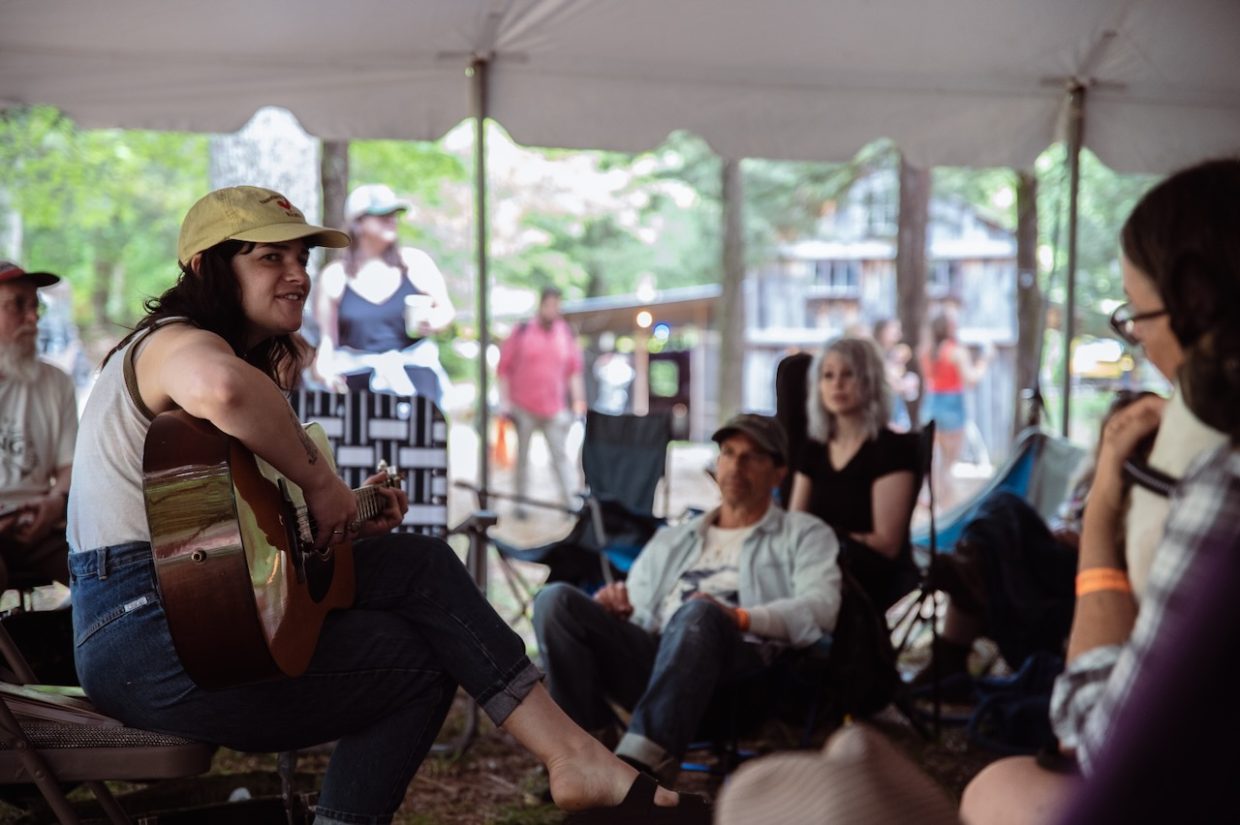
Outside of the workshop, Baiman also led a songwriter round of her own on Sunday afternoon that she used to showcase recent co-writes with Pony Bradshaw (“Equine Elvis”), Caroline Spence (“Throw Away The Moon”), and Jamerson, who joined her for a performance of their song, “The Vine That Ate The South,” due out next month. Additionally, she took to the stage with Leah Blevins, an Eastern Kentucky singer by way of Nashville, prior to Sunday’s round, fiddling with the Sandy Hook native on a selection of songs including the nostalgic “First Time Feeling.”
The set was a grounding one for Blevins, who expressed a longing to return home from Nashville in recent months even as she’s hit a breakthrough, signing a publishing and management deal with Major Bob Music in April. She expects to begin recording a new album soon.
“Any opportunity to be back home in Kentucky is a true sense of comfort,” says Blevins. “There are so many unbelievably talented artists there and this weekend was a true representation of that. It’s inspiring and always humbling to share the stage with folks that you genuinely respect like Nicholas. He’s always made me feel welcomed and his kindness alone is influential on a human level.”
Other Kentucky luminaries that stood out included Somerset’s Cody Lee Meece, brothers Wes and Aaron Smith — who were joined by Anderson on synth for an intriguing acousti-tronic sound — along with Ryan Allen & Maggie Noëlle’s stripped down versions of songs from their band, Magnolia Boulevard, and a Saturday evening round featuring three of the state’s stars of tomorrow: Salyersville native Zoe Howard, Hindman’s Josh Slone, and Central Kentucky’s Ireland Owens.
But it was Hunter Flynn, one of the state’s other promising young talents, that garnered the most attention. A local boy from just up the road in Somerset, Flynn’s Sunday afternoon set showcased the singer’s sensational songwriting and holler yell on cuts like “Spanish Street Signs” and “Fucked Up Brain” that have earned him recent gigs on the road with Zach Top and Ian Munsick, among others.
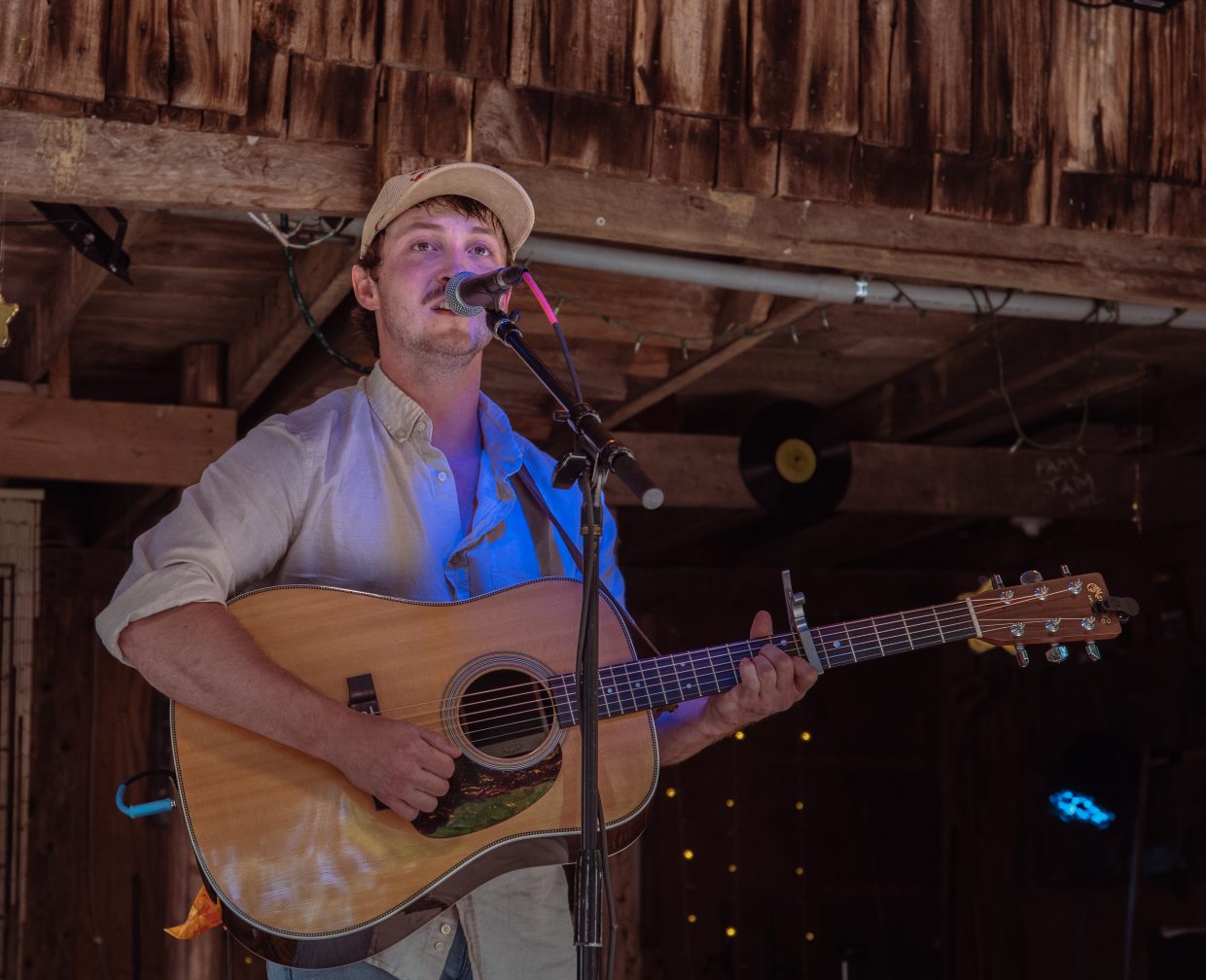
In a pay-it-forward fashion similar to how Jamerson is platforming new artists with the festival, Flynn — who won a recording package from festival sponsor Jamm Nation during the event — plans to serve up his studio time to young artists in need on a collaborative EP that Jamerson will produce. According to Flynn, he wouldn’t be where he is today without Jamerson’s music and guidance.
“Before I knew Childers, before I knew Sturgill, before I knew Stapleton; I knew Nicholas Jamerson,” explains Flynn. “He might not have been the first to do it, but he was the first person that I knew from the Appalachian region that was writing songs and playing them for a living. Now I don’t know a single singer/songwriter from this region who doesn’t cover at least one of his songs. He could win six Grammys next year and it wouldn’t be as much recognition as he deserves.”
A more seasoned Kentucky artist that also turned heads was Henry County’s Joe Clark, who pulled back the curtain on songs typically backed by his country rock band, The Peacemakers, that touch on everything from drug addiction to the love he has for his father. Clark was hard to miss all weekend due to his towering presence, but heartfelt songs like “Wishin’ Well” and “Battlefield” showed a soft side to counter his hard exterior, one of the many things a powerful song can do.
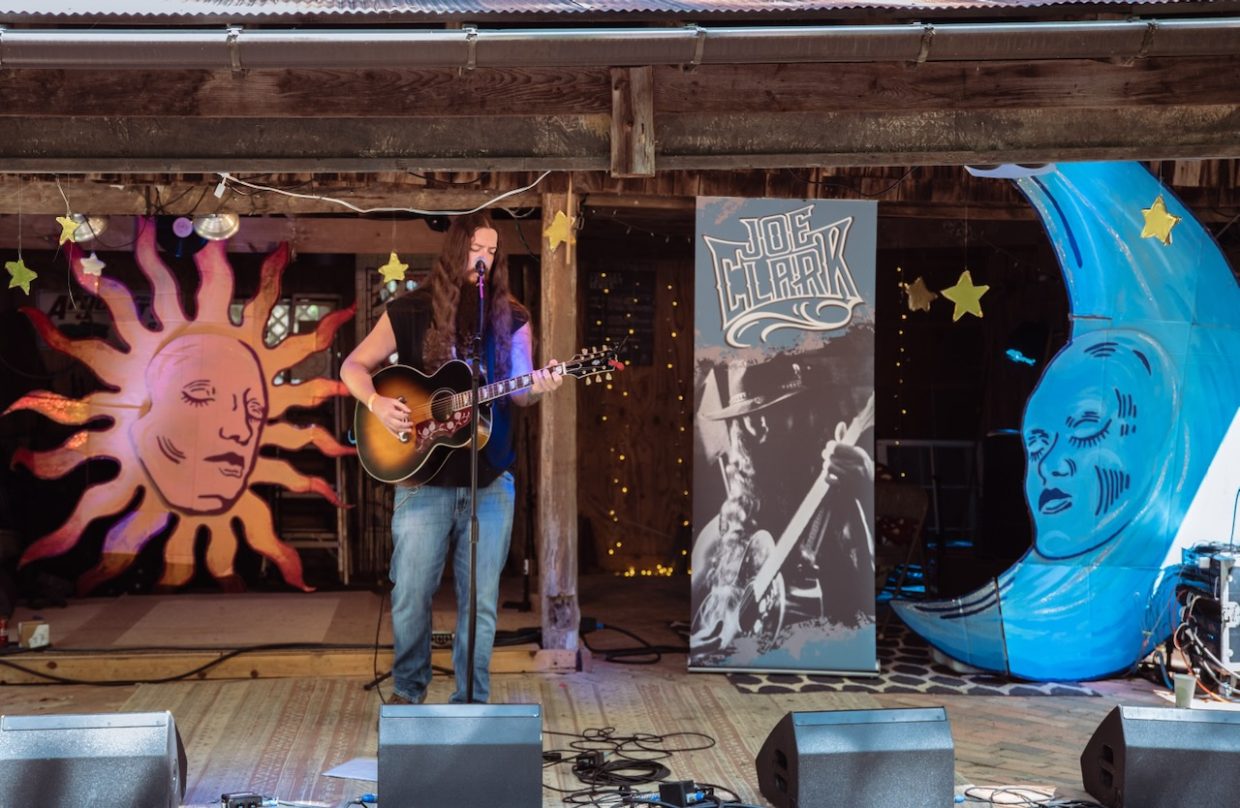
“Music is my therapist. Along with my children and family it’s kept me sober and alive for years,” confides Clark. “I owe my life to songwriting. It is a power greater than me and I’m honored to put pen to paper each time a lyric comes to me. My biggest hope is to be able to take my real life experience and translate it through song in a way that someone else can take it and make it theirs and use it in a healing way for themselves. Music is medicine, and I believe everyone needs a daily dose to stay healthy.”
Closing out Sleeping In The Woods was one of the most iconic and influential Kentucky songwriters ever – Darrell Scott. For nearly two hours on Sunday afternoon the trailblazer showed off his fiery picking skills on iconic songs like “Never Leave Harlan Alive” and “It’s A Great Day To Be Alive,” giving all of the artists and fans in attendance something to look up to and aspire to in the process. The performance also left many in the audience visibly emotional including Jamerson, who could be seen tearing up throughout it.
“Having Darrell there really meant a lot,” reflects Jamerson. “It felt like we had the full spectrum of musicians, from green, next generation, seasoned vets and a master in Darrell. We are hoping to expose the youngins to a sustainable path in this industry, so having someone like Darrell was really validating for me.”
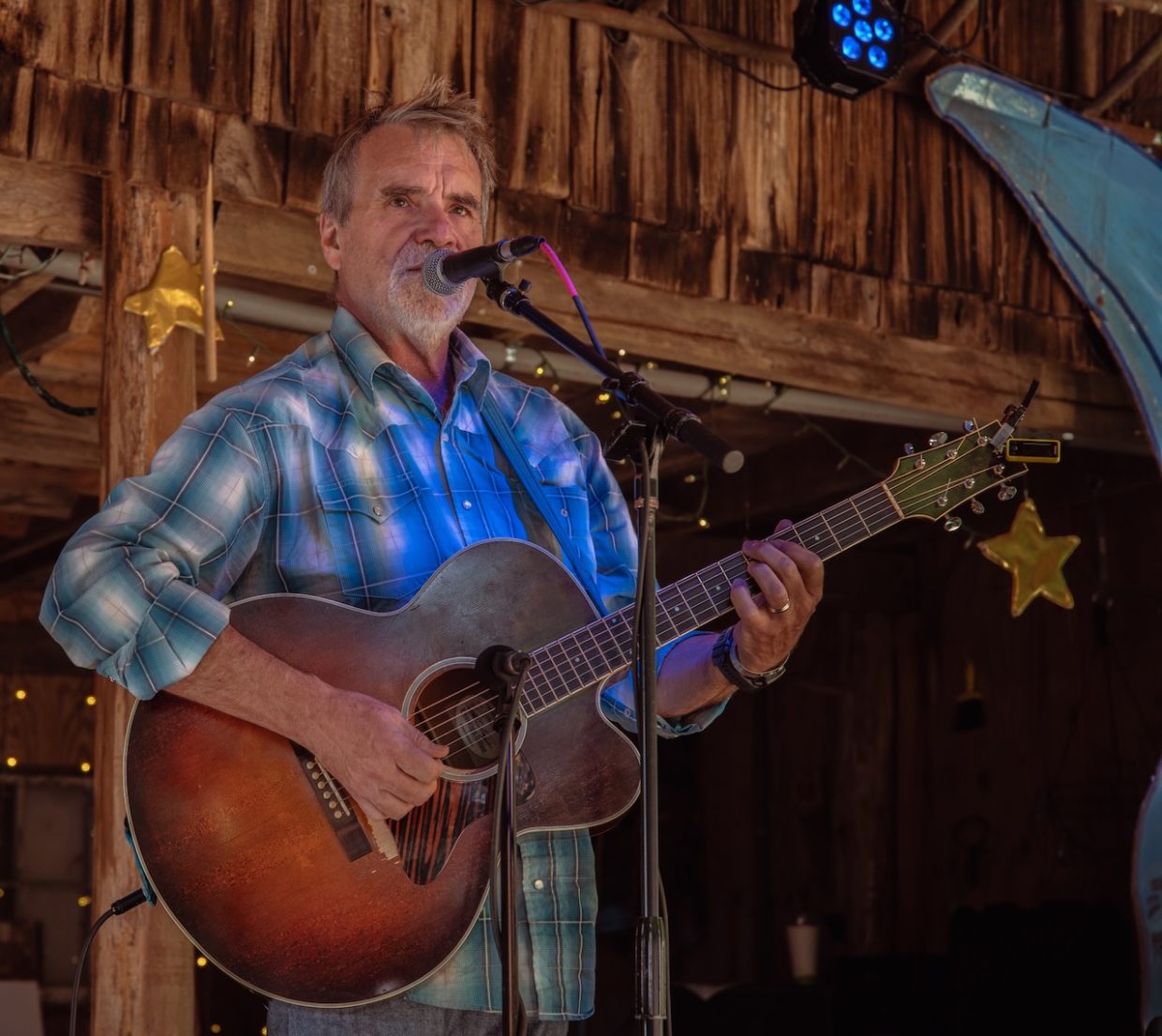
From vets like Darrell Scott to youngins like Josh Slone, Zoe Howard, and Hunter Flynn, and present day stars like Nicholas Jamerson, Sleeping In The Woods was proof of many things — that Kentucky music is in as good a place it’s ever been, that smaller, niche festivals do have a place in today’s music landscape, and that great songwriting will never go out of style.
“It feels like the best way to kick off the year,” describes Jamerson, who’d been laying low since his two-night Hollerday Gitdown in December. “It’s such a great group of people that makes it all happen. It’s also really grounding, inspiring and a nice reminder of the community of people that I’m a part of, which is uplifting and gives me life going into the busy season.”
All photos by Joe Wilkins, courtesy of Sleeping In The Woods festival.
PHOTOS: The 5th Annual Baltimore Old Time Music Festival
More than 1,500 people from 26 different states made their way to the fifth annual Baltimore Old Time Music Festival, bringing pickers, fiddlers, and players of all stringed instruments to rejoice along the waters of the Charm City’s Inner Harbor last month, on April 19 and 20.
A convincing demonstration of the city’s thriving old-time and roots music scene, the Old Time Festival saw attendance more than triple from 2023 as it packed the Baltimore Museum of Industry (BMI) in the first year at its new location after four memorable years at Creative Alliance.
Presented by the Center for Cultural Vibrancy and hosted by father-son duo Ken & Brad Kolodner, this year’s event boasted a lineup of high-profile artists and groups both honoring the traditions of old time, and seeking to broaden them.
BMI and its astonishing collection of artifacts set a remarkable scene that grew to life with performances early Friday evening on the Harborview and Pavilion stages, each presenting splendid views of the Inner Harbor and famous landmarks, like the Domino Sugar sign glowing just to the southeast.
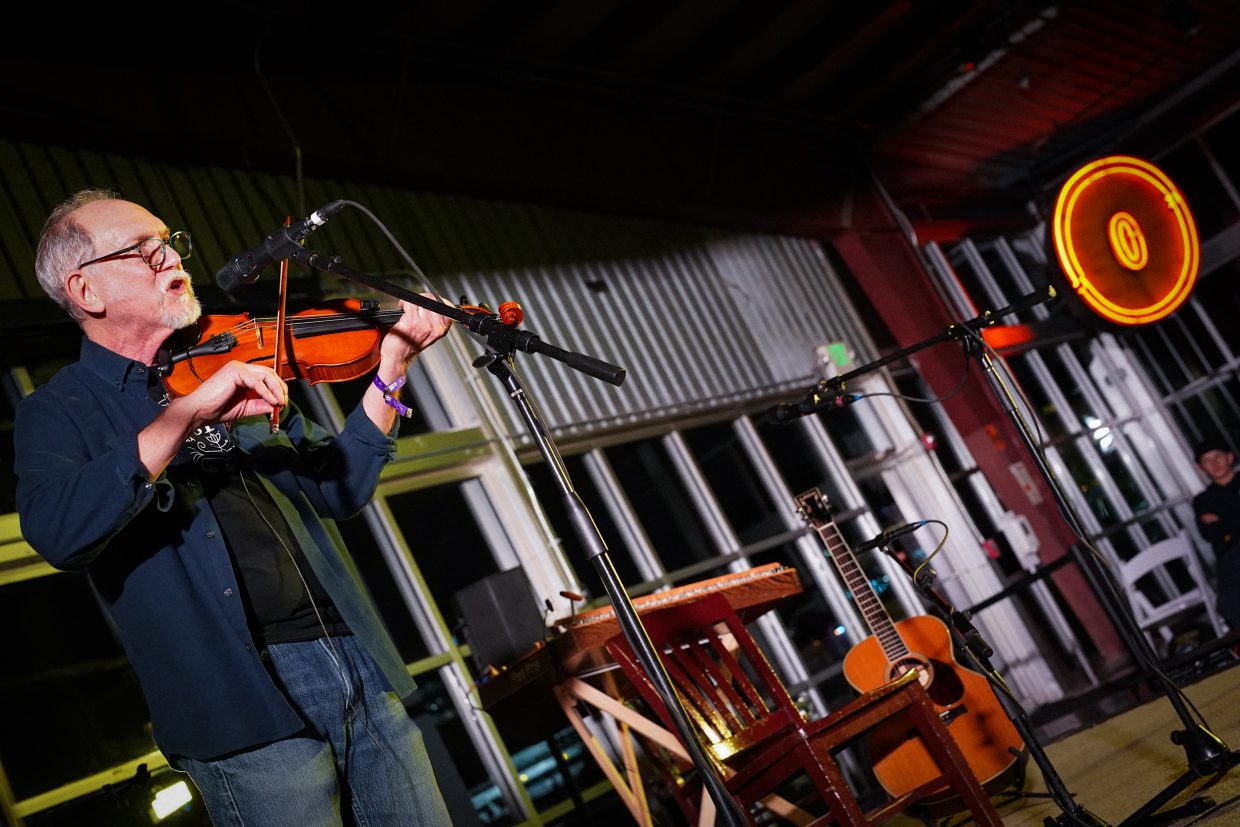
Saturday afternoon brought a loaded schedule of not only live music, but workshops, presentations, and open jam sessions in every nook and corner of the fascinating museum – and outside on its docks, too, where old pals reconnected and total strangers became friends as they played underneath the warm sun all day long.
“We’re clearly witnessing a huge period of growth for our old time community,” said Brad Kolodner, who’s a member of numerous Baltimore-based string bands and, as he does each spring, performed alongside his dad at this year’s festival.
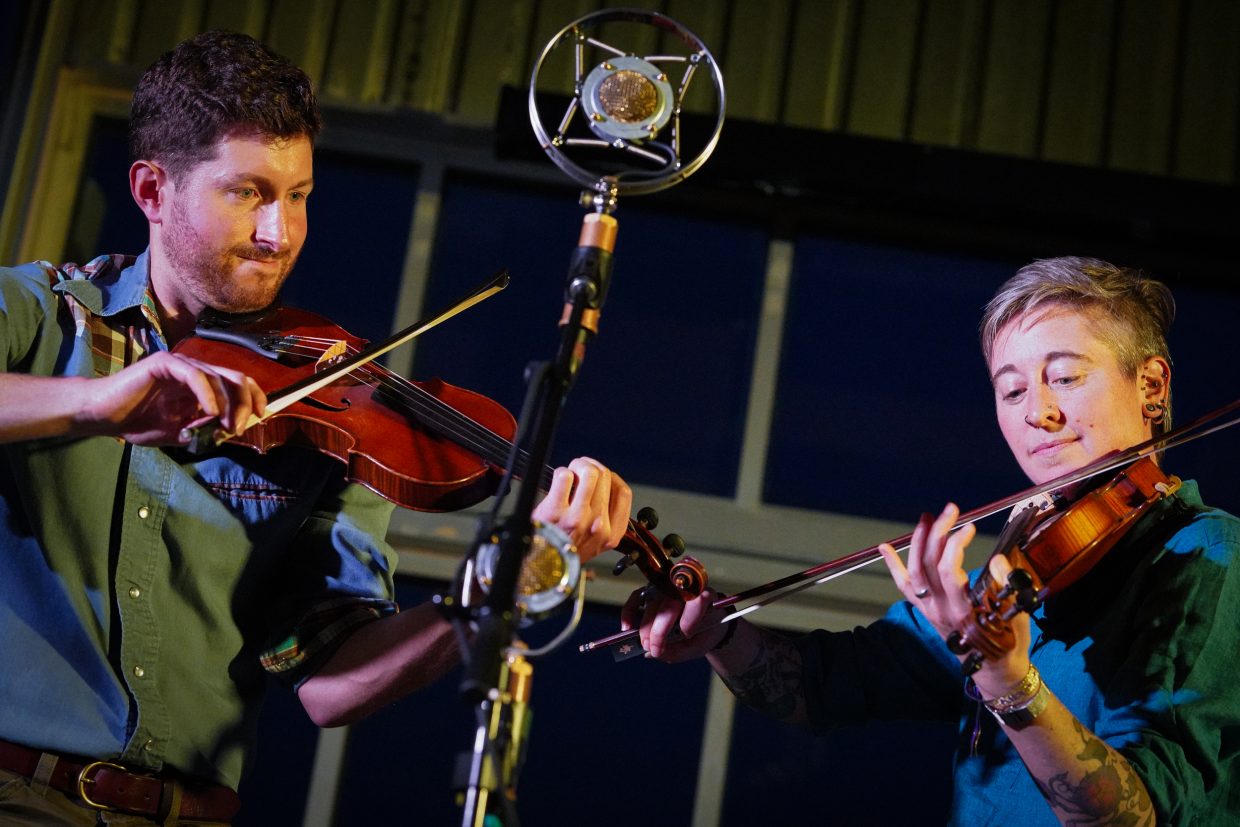
“This marks 10 years that my father and I have been organizing events, square dances, jams and concerts, and this is the culmination of those efforts and work done behind the scene as well. We know that this is already a landmark event for Baltimore, but we took it to another level this year thanks to so much support, the amazing venue and of course the artists, who were incredible.”
Ascending Seattle-based string band The Onlies headlined both nights and served up numerous delightful sets across Friday and Saturday, as did Allison de Groot & Tatiana Hargreaves, the Horsenecks, and Bruce Molsky, a widely respected fiddler, banjoist, guitarist, vocalist and educator.
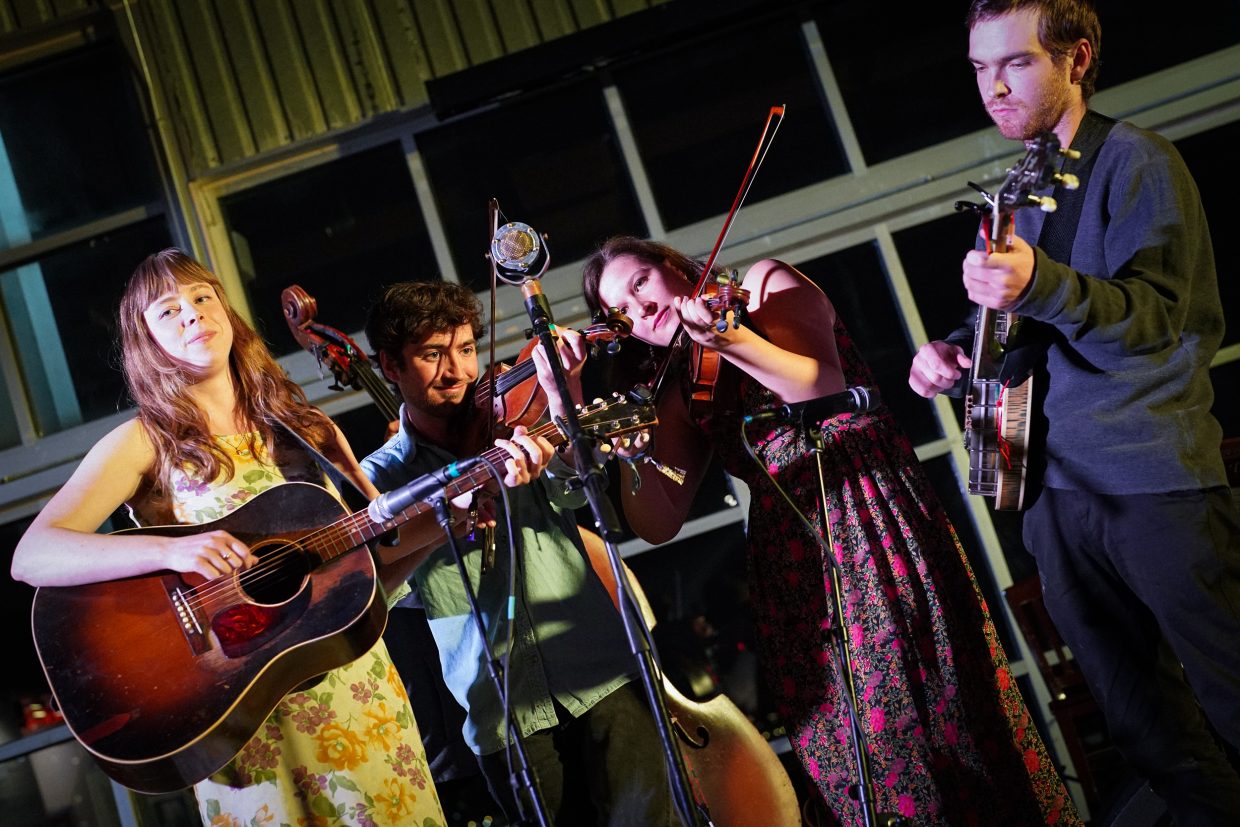
“This festival brought together all the most positive and wonderful aspects of roots and old-time music,” said Molsky, who has recorded and performed with a long list of legendary musicians.
“It really represented all the things I love about this music, including the community,” he continued. “The cross-section of music and kinds of musicians that Brad and Ken programmed was kind of perfect.”
From Africa to Appalachia (one of the weekend’s most anticipated acts) is the fascinating project featuring Grammy-nominated master Malian griot Cheick Hamala Diabate, old-time banjo player Riley Baugus and multi-instrumentalist Danny Knicely.
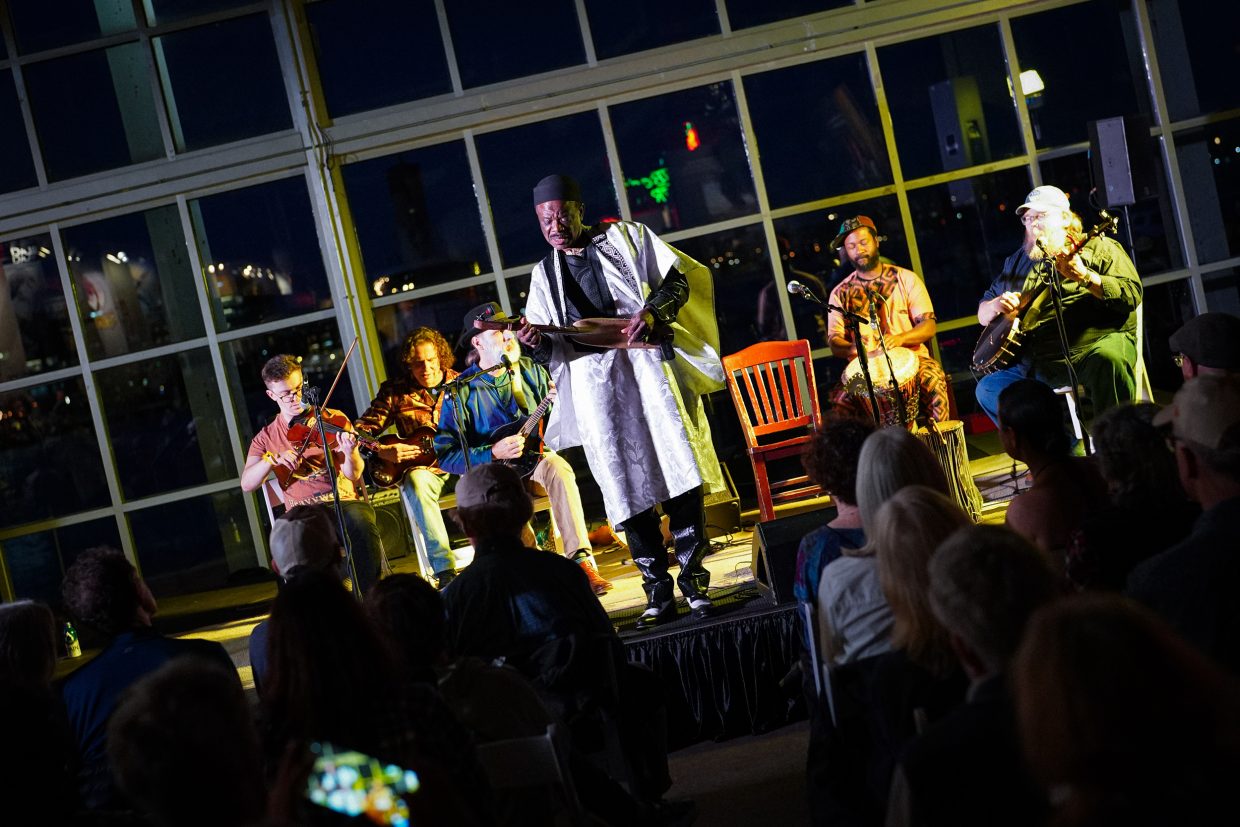
Through its uncommon blend of sound and perspective, the dynamic group illustrates and educates on the historical connection between West African and Appalachian music, a theme crucial to the Baltimore Old Time Music Festival.
“This band — these people — is my heart,” said the spirited Diabate as he detailed his adventures in America, where he’s worked with star musicians and been cast in major motion pictures.
Diabate mesmerized with blazingly fast fingers on the ngoni and played his custom gourd banjo that was handcrafted by Baltimore’s own Pete Ross.
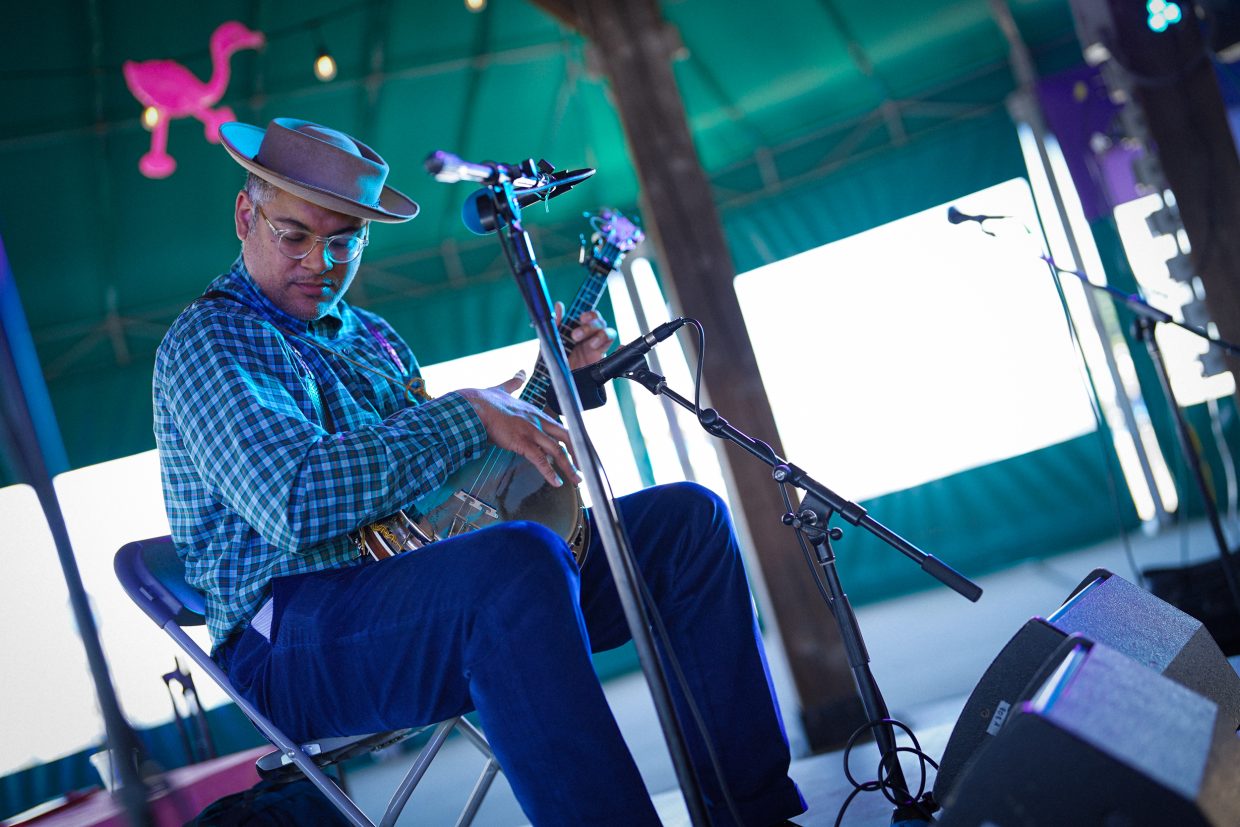
In each of his unforgettable appearances, Diabate riveted with stories and offered advice to concert goers. Presenting a session on Old Time Roots, he spoke alongside modern day old-time pioneer Dom Flemons — a co-founder of the award-winning Carolina Chocolate Drops and himself a Grammy nominee, who delivered two unforgettable performances on Saturday.
Another spectacular presence at the event, Becky Hill is a percussive dancer, choreographer, square-dance caller and educator who has focused her research on Appalachian percussive dance, flat footing and clogging. She considers the old-time space one where dancers are an equal part of the conversation with instrumentalists.
As a performer on both Friday and Saturday at the festival, Hill displayed her interest in the intersections of clogging, flatfooting and tap dance. To do so, she invited tap dancer Roxy Hill to join her at BMI, where they used old-time sounds to examine the relationship between the different dance styles.
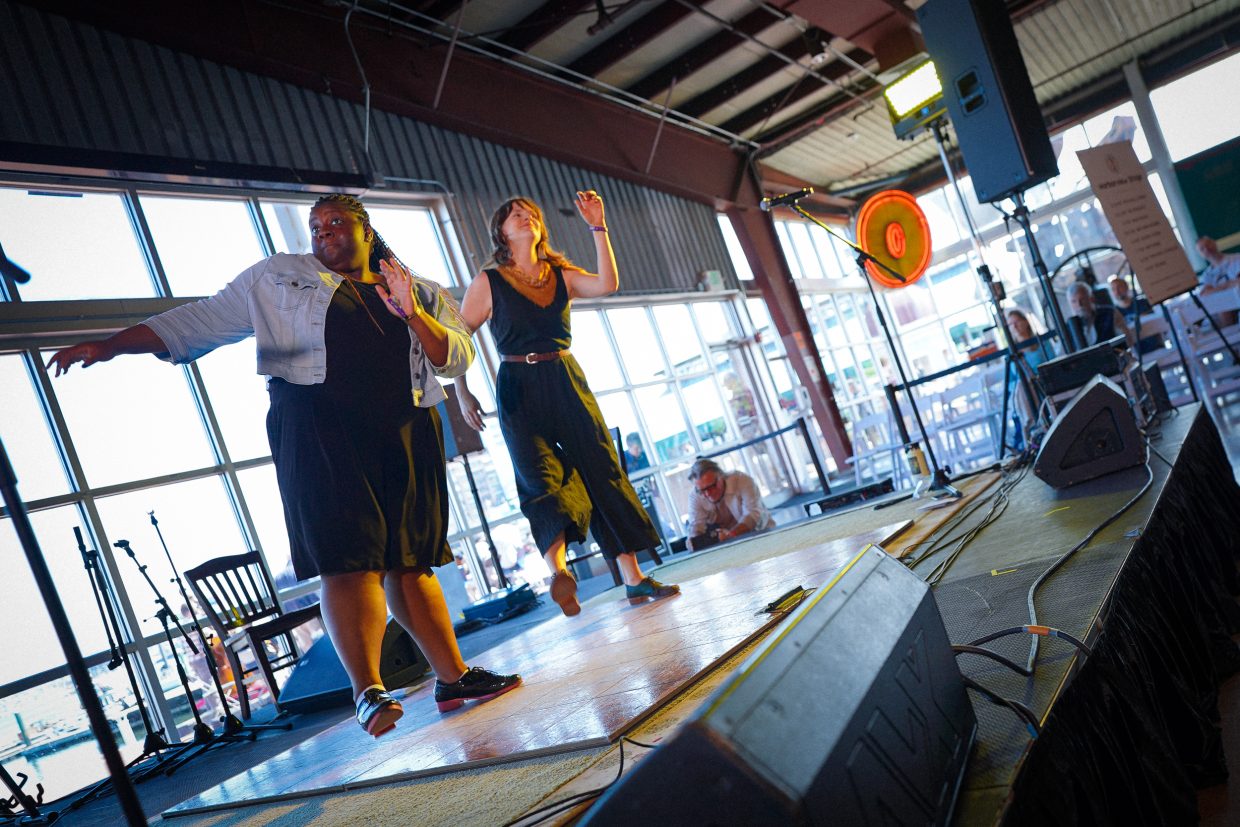
“They’re all American roots percussive dance forms. Both tap and flatfooting originated here and are unique to this complicated melting pot of the U.S. … To have the space to present our dance dialogue on stage feels really significant,” Hill said.
“It opens up new audiences for both tap dancing and flatfooting and it shows that there’s connective tissue across music and dance genres in the U.S. … In particular, what the festival is doing with the Center for Cultural Vibrancy is to expose that connection between all different aspects of old-time music.”
Dance, as it is each year, was a primary feature of the latest Old Time Music Festival, and the two days were capped with a jubilant old fashioned Baltimore square dance that twirled and howled into the late hours on Saturday night.
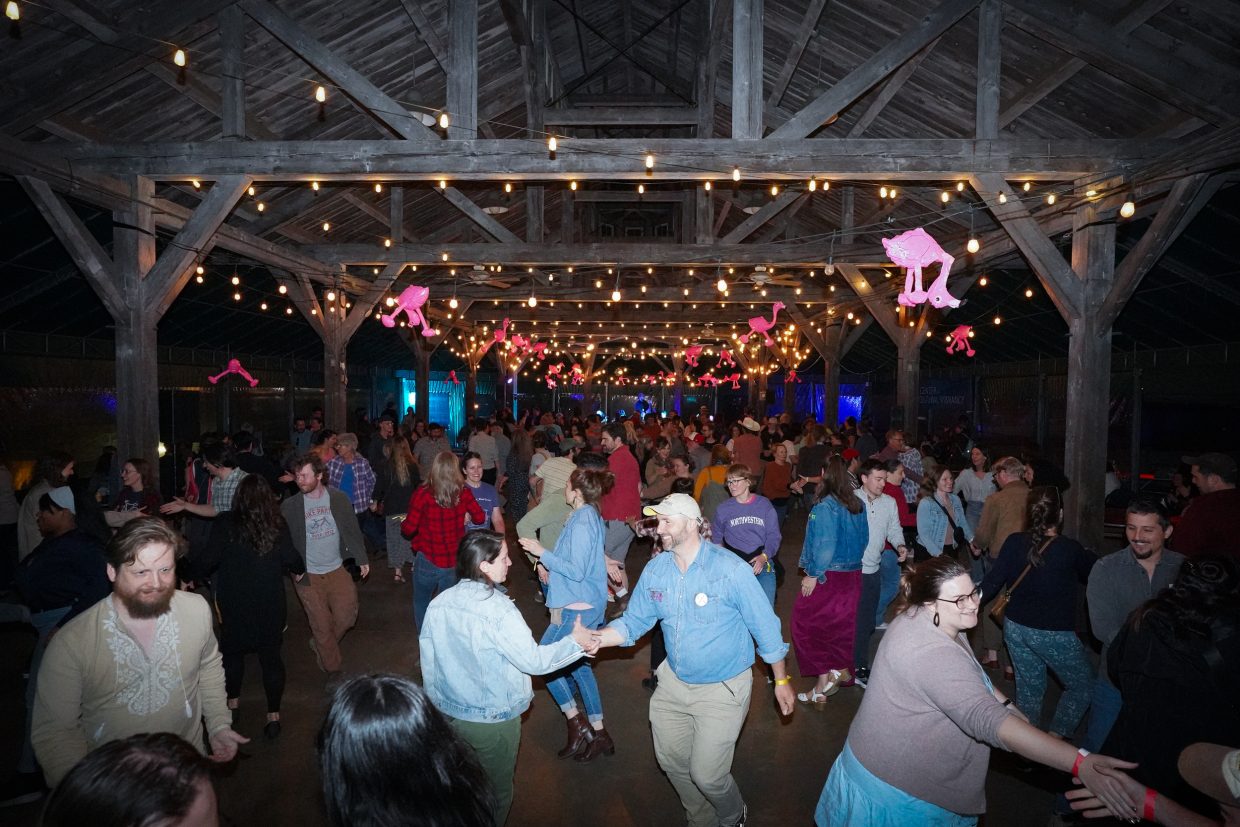
The lively affair took over the pavilion as hundreds of attendees let loose with friends and family. Veteran caller Janine Smith, who’s stoked many Charm City celebrations, led the way with the help of the Horsenecks and other performers from the lineup before all the artists on site joined together to close out the special occasion.
For Molsky and others deep into their careers, the festival provided a refreshing post-pandemic chance to catch up with longtime friends forged on the old time touring circuit, but also to interact with festival goers themselves.
“This kind of music isn’t the thing where a big star is sequestered until they walk out on stage,” he said. “Part of it is walking out there and remembering people’s names and getting to know them. I don’t consider that to be work. I love that.”
Molsky lived in the D.C. area for years and spent time in Baltimore, but he was impressed by what he sees as an undeniable “vibrancy” in the Charm City’s music landscape and its people.
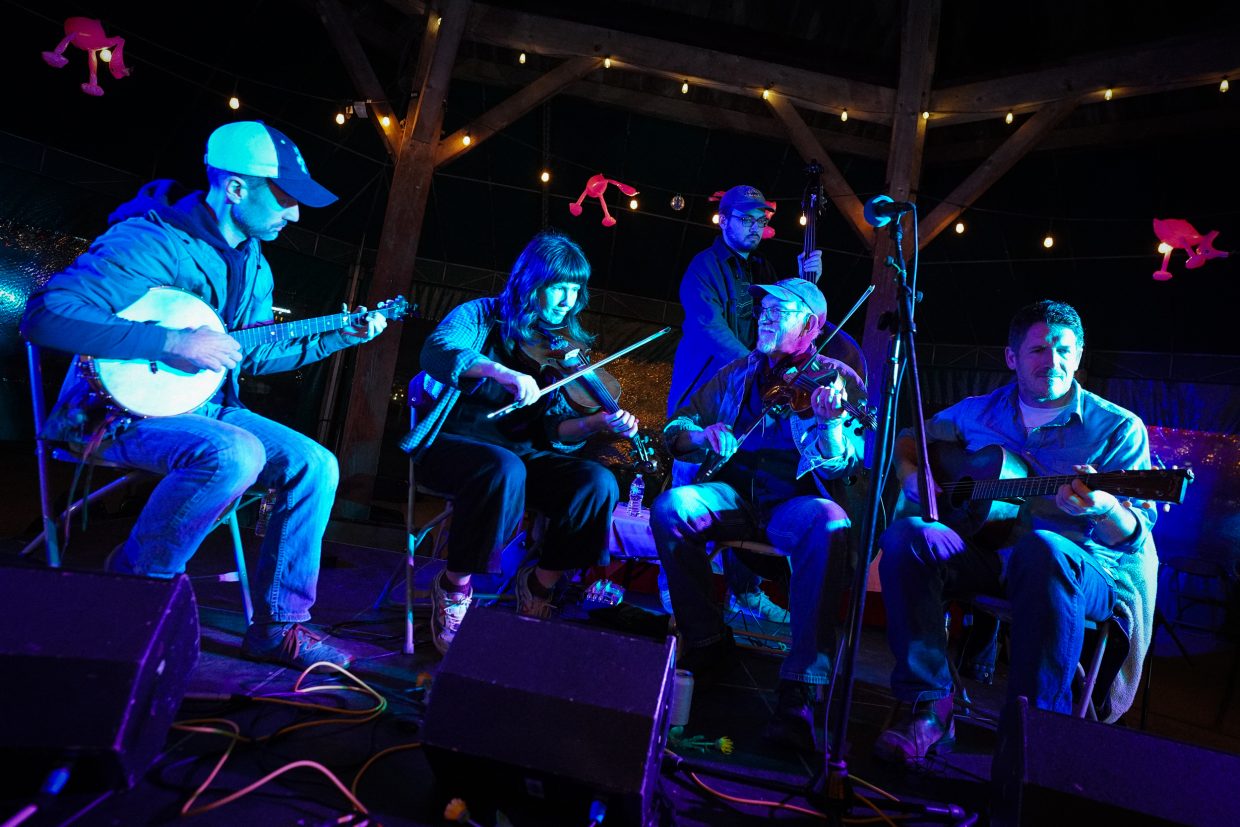
“I think Brad has a lot to do with that,” Molsky said. “When somebody walks up to me and says, ‘Hey man, I’ve been listening to your music for 20 years, it’s so nice to meet you in person,’ I’m moved by that. This festival was just a great festival for meeting people.”
Beyond introducing artists to listeners, the Kolodners intentionally designed the event to help cutting-edge musicians show what they’re doing to expand the traditional confines of the old-time genre.
“It’s going to grow into something beautiful and it already is,” Hill observed.
“It’s unique because it highlights all the different ways that this tradition is evolving by not only celebrating its roots but by having new conversations within it, too, like what Tatiana and Allison are doing or like Roxy and myself,” she continues. “We’re pushing the boundaries and we’re experimenting within the structures that old-time music provides. And I think that is part of how vernacular music traditions keep evolving.”
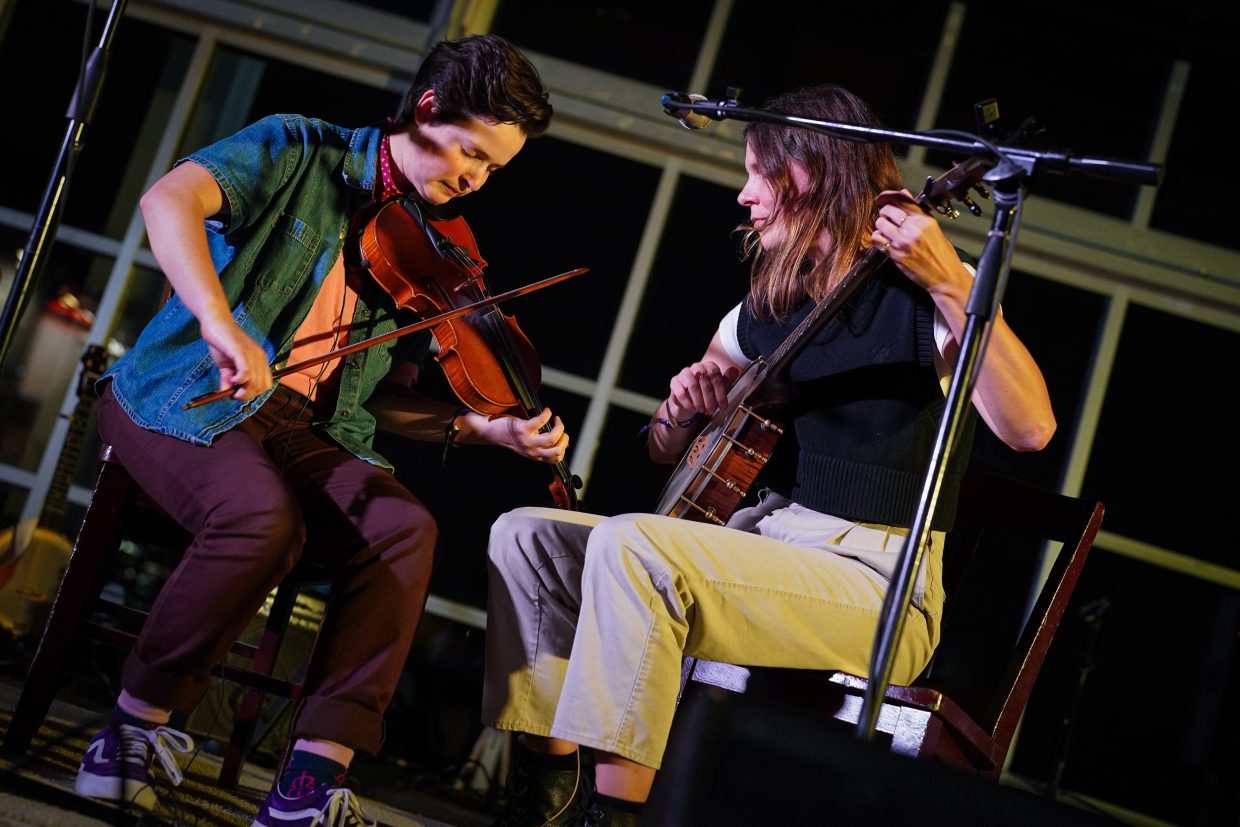
With its 2024 version in the books, the Baltimore Old Time Music Festival has firmly established itself as one of the fastest growing and most influential gatherings of its kind anywhere in the country. Eyeing sustainable growth and a balance of honoring and augmenting old-time customs, the Kolodners are optimistic for what the future holds.
“We’re pleased to make so much progress, to create an enriching experience for everyone involved and we’re thrilled to be at BMI for years to come,” said Brad Kolodner.
“We’re proud of the intergenerational aspects we’ve built into it. We offer children’s programming and make it free for families, all with the hope that we can keep driving interest and participation in old time moving forward. Above all, we aim to celebrate diversity and the true roots of this music through the performers we invite to be here with us.”
Be sure to save the date for next year’s Baltimore Old Time Music Festival, which will return to BMI on April 18 and 19, 2025. More information here.
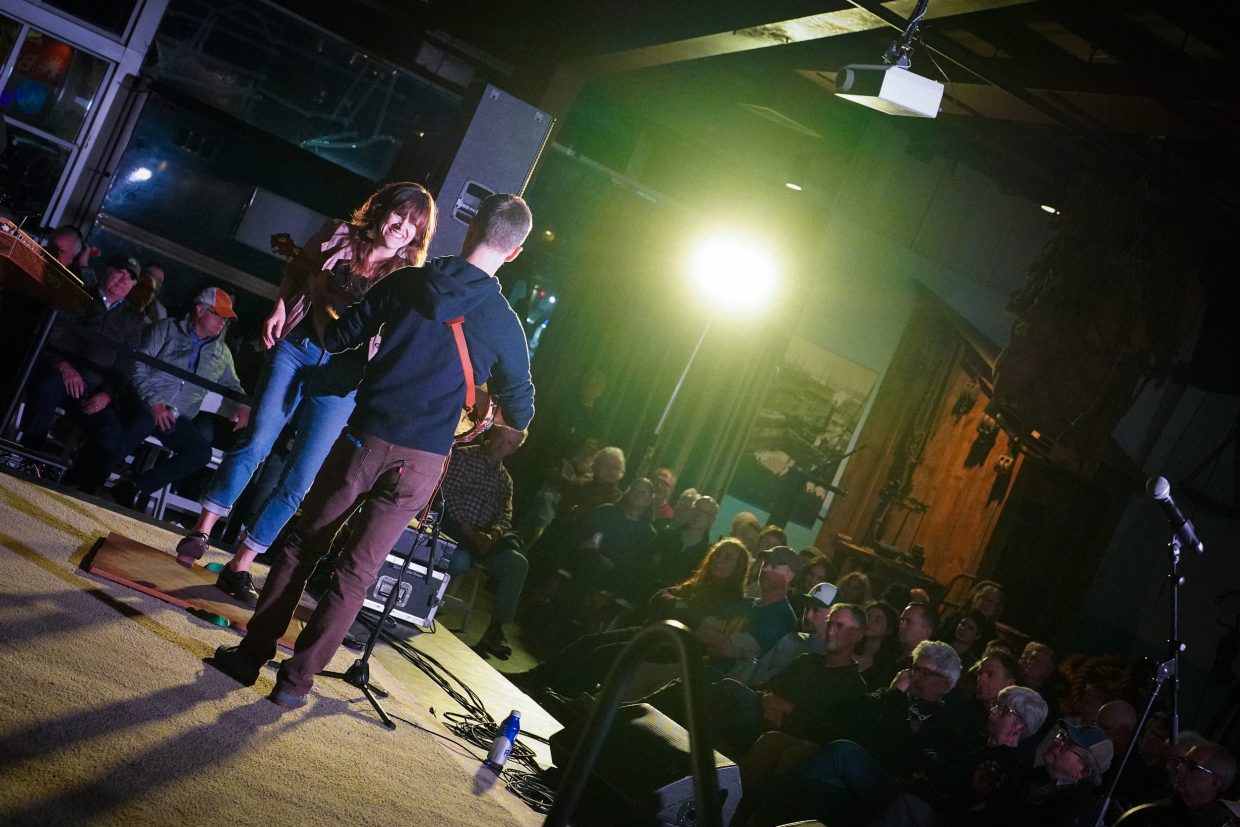
Photo Credit: All photos by Casey Vock and courtesy of the Baltimore Old Time Music Festival.
This Music Festival’s Goal Is Healing Appalachia, From the Inside Out (Part 1 of 2)
This weekend, September 21, 22, and 23, at the West Virginia State Fairgrounds in Lewisburg, West Virginia, ascendant, down home country star Tyler Childers and his cohort will gather for an event begun in 2018 called Healing Appalachia. The benefit festival, put on by West Virginia based non-profit Hope in the Hills, will include performances by some of the biggest and buzziest names in American roots music: Jason Isbell & the 400 Unit, Trey Anastasio Band, Marcus King, Umphrey’s McGee, Amythyst Kiah and many more.
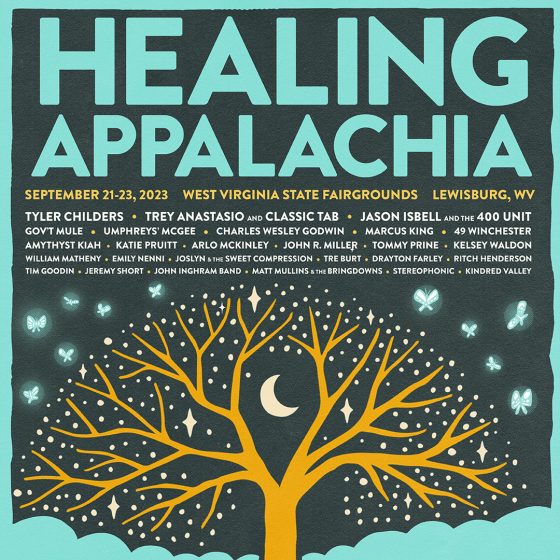
Healing Appalachia is just one of many such community-led, collective efforts born from within the region in recent years that is working towards effecting positive change while offering local, ground-up solutions to big, systemic problems. Their social media and website put it elegantly and succinctly: Their vision is a prosperous Appalachia, free from addiction. The opioid crisis has hit Appalachia, especially West Virginia and Childers’ home state of Kentucky, incredibly hard. When 26 people overdosed on one day in Huntington, West Virginia, in 2016, the mission for Hope in the Hills and Healing Appalachia was born.
At the time, Childers and his hardscrabble team were still climbing the music-industry ladder, building connections and community that would eventually grow and blossom into the multi-day event Healing Appalachia has become today. Childers’ friend and manager, Ian Thornton – who founded WhizzbangBAM, the booking and management company that represents Childers – together with festival program director Charlie Hatcher, Hope in the Hills board president Dave Lavender, and others took that tragic day in Huntington and turned it into an accretion point, around which they gathered and took action. Now, the festival has a local, annual economic impact approaching $3 million while raising thousands of dollars to be distributed to local, on-the-ground organizations and non-profits that specialize in addiction programs, recovery, support and healing for this long-oppressed region of the world.
We spoke to Ian Thornton and Dave Lavender for a two-part interview preview of Healing Appalachia, that dives into the work of Hope in the Hills and explores this grassroots music event’s community-first mission, that hopes to heal these music-steeped, underestimated communities in Appalachia from the inside out. Read our conversation with Ian Thornton below, read our conversation with Dave Lavender here.
Unable to attend the festival this weekend? You can donate to support the cause here.
Could you tell me a little bit about the background, the impetus, or the inspiration when you all were putting your heads together to make an event called Healing Appalachia. What was that like?
Ian Thornton: I’m very close friends with a fellow named Charlie Hatcher, who’s actually the festival producer for the event. The idea came to him first – you know, he tells the story better than I do – but he was on a fishing trip and got a call that yet another one of his friends had passed away from an opioid overdose. You know, we’ve all lost countless friends who we grew up with, went to school with, and I guess you’d say this one was the straw that broke the camel’s back. Charlie just kind of wanted to do something about it. He reached out to me and we got our heads working.
We’re not a recovery organization ourselves, right? But what we’re good at is the music side of things, producing events, working with musicians, playing music, inspiring people, bringing people together. That’s kind of how it was born. I talked to Charlie, who is friends with Tyler [Childers], too, and obviously this is something Tyler is very passionate about.
Tyler is also from Appalachia and he’s lost friends and family members, himself. The idea kind of spawned from thinking, “What if we do essentially a Farm Aid type of event?” The thought process was to have Tyler be the face of it and have all the efforts go towards recovery and the battle against the opioid epidemic here in Appalachia.
What I love about a cause like this is that the music itself is generative and restorative, and isn’t just a tool to generate interest or awareness. How do music and the arts play a role in a mission like this, in healing Appalachia, where the music can do the work as well as spotlighting the work? Do you agree or disagree?
IT: I certainly agree, and I think music is one of those things that ties everyone together, right? On a base level.
This one I think is in particular, it’s special because substance use and music are pretty closely tied together. A lot of musicians suffer from [substance abuse], and it’s part of the lifestyle, right? It’s part of what you see as “the rock and roll lifestyle” or whatever you call it. They kind of go hand in hand. We’re all more aware of it now, too, and we all know folks who have taken things to the extreme, then they’ve had to kind of pull back and get sober after feeling like they lost their way. We wanna show that sobriety and rock and roll – or whatever you want to call it – can live together harmoniously, just as easy as the party side of things.
A very good friend of mine, who’s no longer with us, Tom Morgan, he battled with sobriety for a long time. He was one of the guys that taught me my first chords on a guitar, right? And it got to the point, for him, where he couldn’t even go to shows locally, because they’re always at bars, right? Venues and bars are so closely associated that it can be difficult for someone who is in recovery.
I think that’s why the music side of Healing Appalachia, using music to bring awareness to this epidemic, really goes hand-in-hand. Even some of our performers – Trey Anastasio is performing this year and I think he’s over 15 years sober, now. Obviously with Phish, which is, you know, the jam band, you would assume, drug culture and everything else is associated with that. But, Trey’s only gotten greater in what he’s done with his musicianship. And, you know, Tyler even comments too that his artistry has improved and he’s been able to focus more on it since becoming sober and quitting drinking.
What is the importance of community and mutual aid to this mission, and how important is it that you all are not just people coming in from the outside, that you all have a stake in this – regionally and locally. Do you think that building community as you’re doing this is just as important as doing the work as well?
IT: Yeah. And, you know, to be honest, I think that’s where it has to start. You can look at things on these big levels and you can just get overcome or overwhelmed with how large the changes you’re trying to make are. At that point you get discouraged and you’re not going to do it.
Living inside Appalachia, we have heard all of the stereotypes. That we’re, you know, “Shoeless, toothless, drug-addled, fat…” We’ve dealt with these things and we’ve dealt with the oppression of the coal industry, of big money, of big pharma. All of this built on the backs of Appalachians.
I’ve always been someone who believes that you have to start locally. You have to have something that’s attainable. Something you can put your hands on and something that’s meaningful – it’s more meaningful to us because we’re in the fucking thick of it, right? I mean, Huntington, West Virginia, was almost the nucleus of the opioid crisis, and that’s the city I was born and raised in. We watched [everything] happen, the day there were 26 overdoses in one day due to a bad batch of heroin coming in. If you create something locally and have local people that are invested, what that does is it will not only grow the mission in and of itself, to help people become more aware. But one of my ultimate goals was always for someone else to see what we’re doing and it inspires them to do something in their region. Sometimes that’s all people need. They just need to be pushed over the hump to get the inspiration.
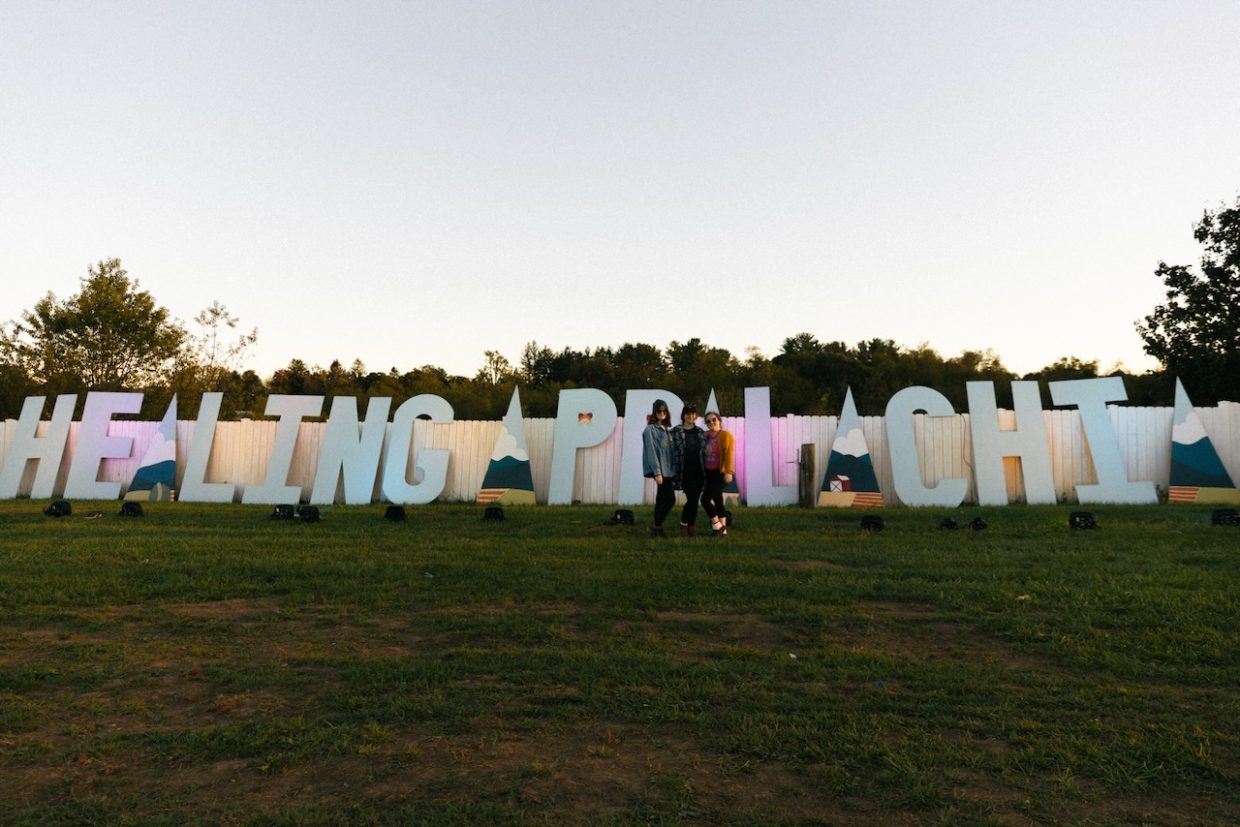
Do you have an idea of the scale of the economic impact of the festival, not only for your mission, but also for the area in general?
Yeah, so I’m going to refer to my fact sheet here. [Laughs] We’ve estimated $2.4 million in local economy spending in southern West Virginia and the Lewisburg area. That’s like hotels, gas stations, shops, restaurants, everything. On top of that, we donate money directly, too, and we pull a lot of volunteers from the region.
Like, the local high school basketball team will come and clean up trash. We’ve given more than $50,000 to local youth organizations in Greenbrier County alone. I think we had over 30 states and 6 countries represented last year in concertgoers.
It does make the point for you: You can have all of the apparatus and all the infrastructure, but if you don’t have the community, how do you take those numbers and turn them into something that means something to the people who are on the ground there in West Virginia? And involving them, too, right? Everything from the car lots to catering to cooking burgers out back.
To date, we have donated over $400,000 to recovery wellness organizations. That goes to over two dozen different organizations. We’re not a recovery organization ourselves, right? We’re facilitators. What we’re trying to do is give people that want to do that side of the work the means to do it. We don’t have this crazy application process for grantees. You don’t have to have a degree in grant writing to come to us. Tell us what it is you’re doing, tell us what you need. It could be needle exchange programs or money going towards Jacob’s Ladder, which is an organization for children that were born addicted. We try to hit all sides of it that we can, relying on donations as well as funds raised from the concert itself.
What bands, acts, or artists are you particularly excited about this year when you look at the lineup? It’s a pretty stout lineup!
To be quite honest, I’m pretty excited about the whole thing! When this started it was a small, one day event. I think we only had around 7,500 people show up to it. Last year, we had 16,000+ plus.
I’m personally pretty excited about Trey Anastasio and Classic TAB. I’m such a Phish fan, obviously, and can’t believe we’re having Trey play right before Tyler. I’m just really stoked about that! Also excited for Gov’t Mule, Isbell, 49 Winchester, who are cruising right now. And then, you know, keeping some local folks involved, too, your Kelsey Waldon, Charles Wesley Godwin. And Mr. Tommy Prime, who is fantastic and obviously, his father was an inspiration to a lot of these folks.
It’s really special to see some of these folks actually coming to us now. At first, you know how it is, you have to go beg people, “Hey… I’m doing this charity thing… You want to go play for free? We’ll get you in the local paper…” The “exposure” gigs, right? And now the pitch writes itself! The work that’s been done speaks for itself and people get behind it.
It goes back to the tie with substance abuse and music. You know, they go hand in hand. … I drink, right? It’s nothing that I’m personally [abusing], thankfully. But substance abuse is a thing that can get out of hand in the music industry.
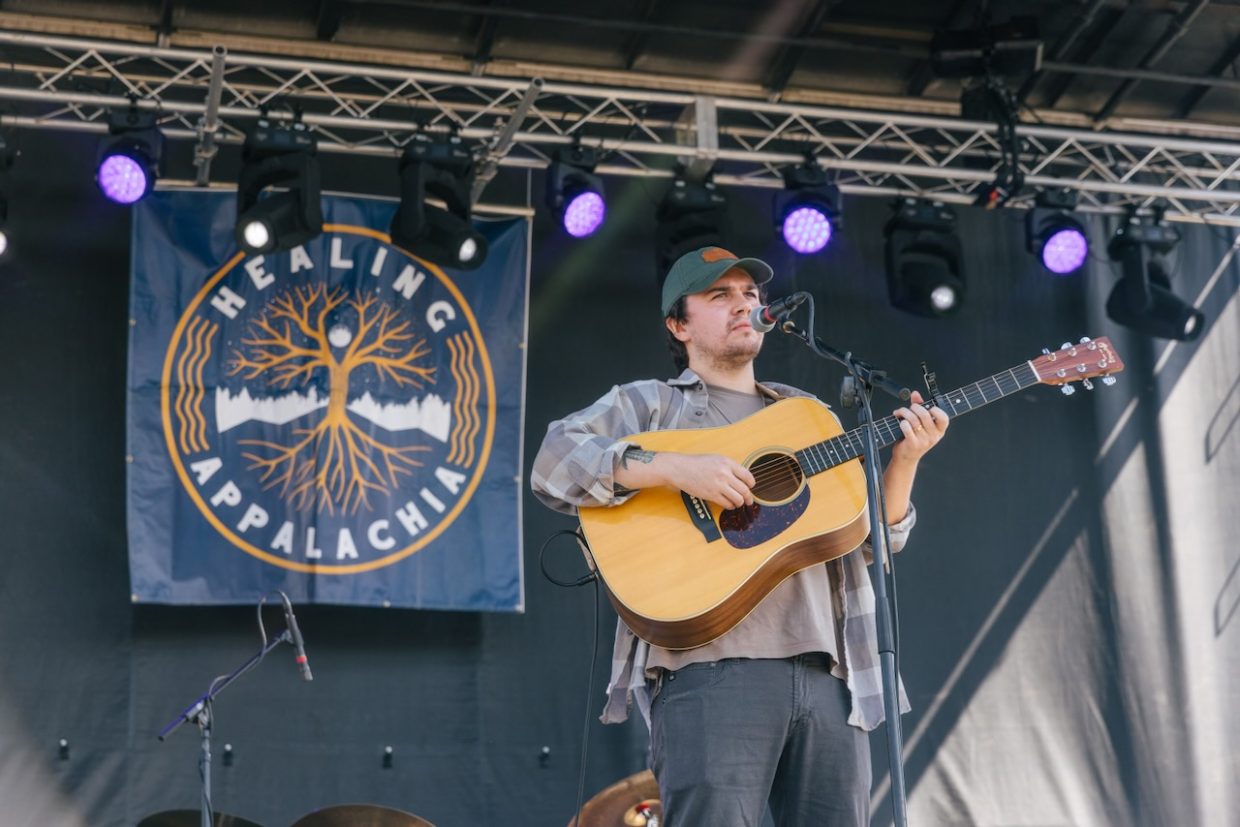
Let’s close with two questions and they feel very big, but don’t be alarmed: What does a healed Appalachia look like to you, personally? And what’s one thing that you’d like people to know about Appalachia?
IT: I mean in healing Appalachia, we just have to make it so that folks don’t feel trapped or alone. And to let them know, if it’s a battle they’re going up against, they’re not the first one to do it, even if it’s not an easy battle. It’s not going to be a mound to climb, it’s a goddamn mountain, right? So, having the availability and the resources in place so that when someone is ready to take this on, whether it be the first time or the 10th time, that they don’t feel ashamed or guilty about it. That they feel loved and like a human being.
Question 2, I think wherever you come from, rural, urban, or whatever, it’s the stigmas, right? I want people to know how those stigmas make an impact. The stereotypes of, “They’re fat, uneducated. They live in hills and don’t wear shoes, right?” The whole reason I do what I do, with Whizzbang in particular, I only work with acts from our region. And I do that specifically. When I started getting into all this, even before Tyler, just seeing the music that’s created here. We are not just one thing, right? Nobody is just one thing. You cannot judge a whole people by the bit of the iceberg that floats on top.
The stuff on top that’s the most visual, but you can’t judge a whole people by that. Appalachia is the most beautiful place in the country. Granted, I’m biased. I grew up there.
(Editor’s Note: Read part two, our conversation with Hope in the Hills board president Dave Lavender, here.)
Photos by Hunter Way / Impact Media
This Music Festival’s Goal Is Healing Appalachia, From the Inside Out (Part 2 of 2)
This weekend, September 21, 22, and 23, at the West Virginia State Fairgrounds in Lewisburg, West Virginia, ascendant, down home country star Tyler Childers and his cohort will gather for an event begun in 2018 called Healing Appalachia. The benefit festival, put on by West Virginia based non-profit Hope in the Hills, will include performances by some of the biggest and buzziest names in American roots music: Jason Isbell & the 400 Unit, Trey Anastasio Band, Marcus King, Umphrey’s McGee, Amythyst Kiah and many more.

Healing Appalachia is just one of many such community-led, collective efforts born from within the region in recent years that is working towards effecting positive change while offering local, ground-up solutions to big, systemic problems. Their social media and website put it elegantly and succinctly: Their vision is a prosperous Appalachia, free from addiction. The opioid crisis has hit Appalachia, especially West Virginia and Childers’ home state of Kentucky, incredibly hard. When 26 people overdosed on one day in Huntington, West Virginia, in 2016, the mission for Hope in the Hills and Healing Appalachia was born.
At the time, Childers and his hardscrabble team were still climbing the music industry ladder, building connections and community that would eventually grow and blossom into the multi-day event Healing Appalachia has become today. Childers’ friend and manager, Ian Thornton – who founded WhizzbangBAM, the booking and management company that represents Childers – together with festival program director Charlie Hatcher, Hope in the Hills board president Dave Lavender, and others took that tragic day in Huntington and turned it into an accretion point, around which they gathered and took action. Now, the festival has a local, annual economic impact approaching $3 million while raising thousands of dollars to be distributed to local, on-the-ground organizations and non-profits that specialize in addiction programs, recovery, support, and healing for this long-oppressed region of the world.
We spoke to Ian Thornton and Dave Lavender for a two-part interview preview of Healing Appalachia, that dives into the work of Hope in the Hills and explores this grassroots music event’s community-first mission, that hopes to heal these music-steeped, underestimated communities in Appalachia from the inside out. Read our conversation with Dave Lavender below, read our conversation with Ian Thornton here.
Unable to attend the festival this weekend? You can donate to support the cause here.
Can you talk a bit about the impetus or inspirations for Healing Appalachia?
Dave Lavender: Hope in the Hills, our non-profit, was started in 2017, and then the first Healing Appalachia was held in 2018 as it took a minute for Ian Thornton, Keebie Gilkerson and Charlie Hatcher, and the other OG board members to get the all-volunteer non-profit going.
The birth of the group is rooted in the events of 2016 – two historic things happened that year. In June 2016, central West Virginia got record flooding that killed 23 people. Shortly thereafter, the Huntington music scene, which was really getting built-up in a mighty way with touring bands, came together and raised more money in one night at the V Club than some big corporate fundraisers had in a couple weeks. I think all of us there saw a ragtag bunch of musicians could really make a difference banding together. Interestingly, Tyler Childers and the Food Stamps’ first New York City trip was that August as well, for a West Virginia flood fundraiser organized by our friend, Michael Cerveris, the two-time Tony winner from Huntington.
As that was happening in August 2016, Huntington, West Virginia, hit the world’s headline news with 26 overdose calls within four hours. It might have been a shock to the world, but we were all living around it in West Virginia so Ian, Tyler and Charlie Hatcher, Healing’s co-founder and show producer, knew how bad it was, and knew it was time to project the “bat signal” in the air, and unite their super friends in music to gather again and put on a show to help out the boots-on-the-ground folks overwhelmed and trying to assist in this opioid crisis.
One thing that struck me about the organization and the event is how y’all are from the region and building support systems, resources and pathways for folks from within the region – can you talk about the importance of mutual aid and community to the org and also the event?
DL: Everyone in the world knows the West Virginia theme song is “Country Roads,” but I would say the West Virginia and Appalachian motto is a song from Slab Fork, West Virginia-native Bill Withers. He wrote “Lean on Me” about being raised in the coal camp where you rely on your neighbors. Being from Appalachia, we know help is not on the way and that we are also better and stronger together.
For Hope in the Hills as a granting organization, we try to stay acutely aware of the ever-changing recovery ecosystem and fill the gaps where we can. For instance, I think the general public thinks of the opioid crisis as, “That’s the guy with the backpack at the recovery house.” Yes, true. But, the opioid crisis has created deep and wide fall-out – from historic numbers of kids in foster care (addressed by Barbara Kingsolver in her latest Pulitzer-Prize winning book, Demon Copperhead), to an overloaded prison system with non-violent drug offenders to many governments not wanting to fund harm reduction – even though they know through countless studies that it saves lives. Without harm reduction, communities are likely to get horrific spikes in hepatitis and HIV.
We try to put what funds we have into the gaps to provide a little help, but to also let folks know through our socials about some of these amazing programs happening across the region with things like camps for kids in trauma, and innovative recovery-work programs.
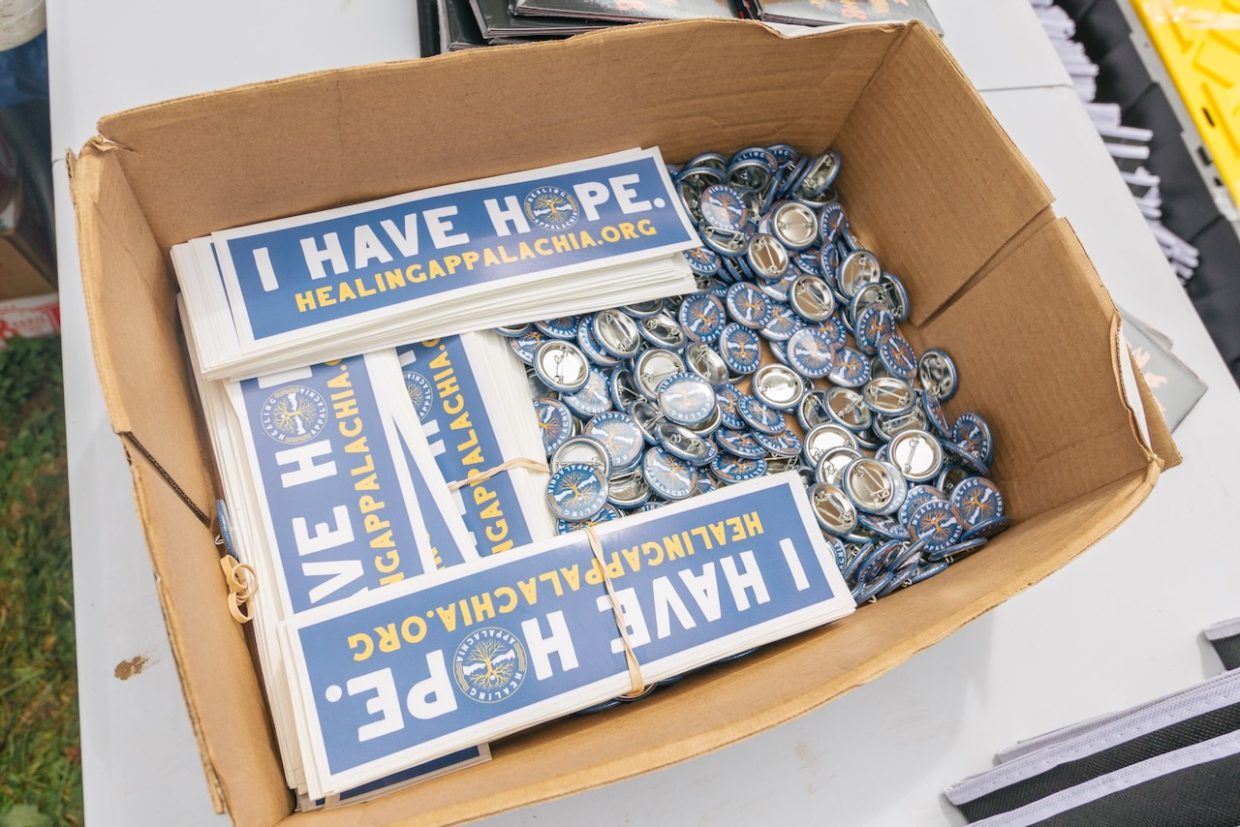
As for the event, I think that “Lean on Me” spirit is really palpable everywhere you look at Healing Appalachia. We’ve modeled ourselves in the spirit of using music to create social change, after Farm Aid. Healing is shining a light on a crisis that many choose to ignore. We’re highlighting amazing people who help daily to deal with that crisis. We’re inspiring attendees through the music, testimonials from the stage, and the dozens of service providers there, to go forth and be the change when they get home from the concert, wherever home is. And that home is widespread – last year we had folks from 38 states and 3 countries.
The message I hope the casual music fan receives in their heart and acts upon from Healing Appalachia is that the opioid crisis is not “us and them,” it’s just us. Last year, we lost more than 109,000 in the United States to overdose. Music is a powerful vehicle for conveying with love that message of empathy. Even if you haven’t lost someone personally to overdose, we lost Prince, Tom Petty, Whitney Houston, and a long list of beloved musicians to opioid overdoses. So I hope that at the very least the casual music fan who comes just to see some amazing bands, goes back home with an improved empathy muscle that allows them to lay down the proverbial stones and jokes and judgment they were set to throw at someone suffering from Substance Use Disorder and in active addiction.
For the recovery service groups coming to Healing – and this year we will have more than 40 from 13 states – I want them to know, that as Mavis Staples sings, “You’re Not Alone.”
That they hopefully will meet folks from organizations like them who are in the trenches everyday, doing the hard, tedious and often-unsung work of helping someone along their journey, and that they may pick up some best practices, some group to ally with, and some friends from across Appalachia who know their struggles and can be an encourager.
Do you have a favorite anecdote or story about a partner organization or individual or program that was particularly impactful, or a perfect representation of why you do what you do?
DL: At Healing Appalachia last year, Kenney Matthews, the ONEBox coordinator for Drug Intervention Institute was one of our main speakers. I’m typically running around taking care of a lot of back-end stuff at the fest, but I was out there with him before he went out. He was really nervous, but I hugged him and told him he was going to crush it. He did, and threw down this beautiful line about “the opposite of addiction is connection.” It really was electric, so real and so true. I was talking with my wife, Toril, after Healing and Kenney – who spent 15 years in prison – told her about running into a prison guard who knew him on the inside at the festival. The guard tells Kenney he never did think he would change and that he was really proud of him, and they both had a moment of healing at Healing. We’ve had LOTS of moments in doing this work and the fest is full of them, but I loved hearing both sides of Kenney’s story and its impact to spread hope.
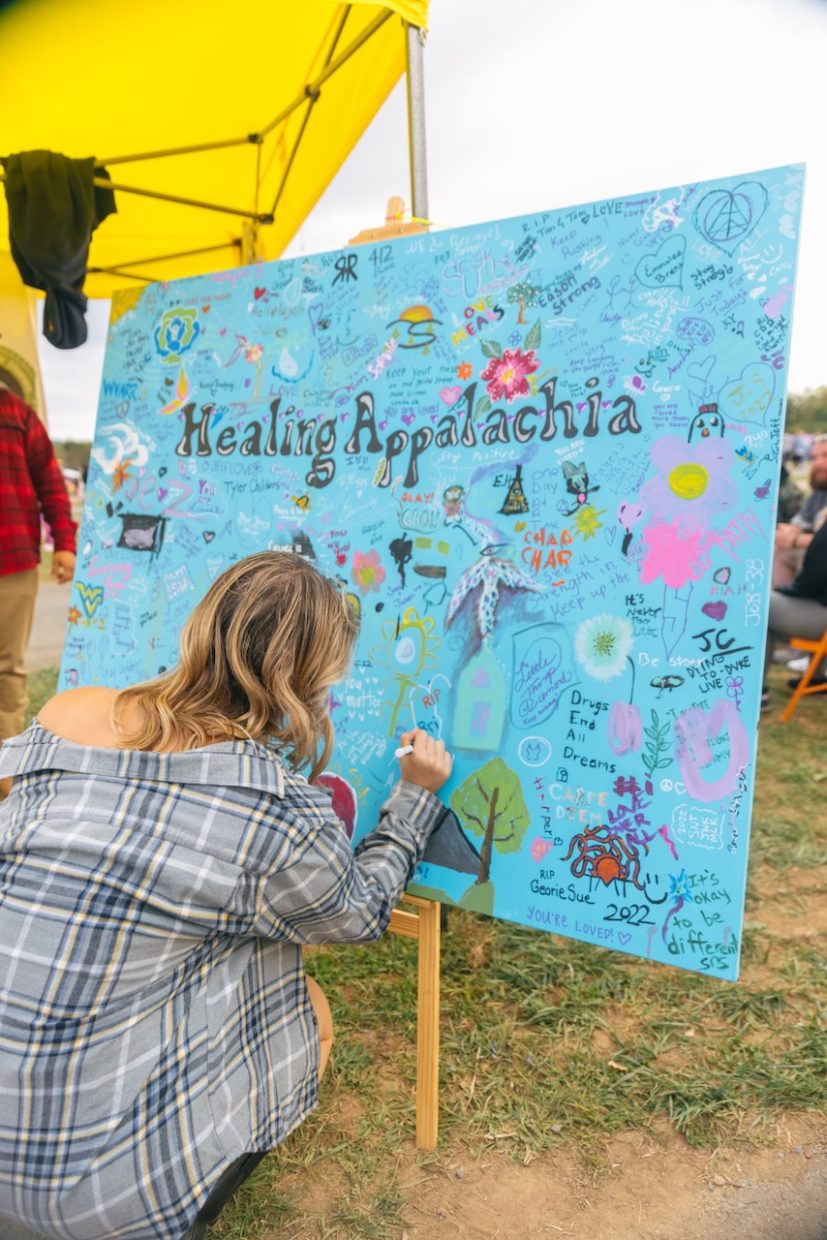
How do you – either individually or as a group – see music and the arts (especially arts with regional ties, like folk and country music and folk arts) as part of these regional solutions to regional problems?
DL: In Appalachia, storytelling and music are so grapevine-wrapped in who we are, how we think, what we do, so connecting and teaming up with those artists who are using their music with intent and purpose is what we want to do.
As a group, Hope in the Hills, we’ve been building out a Music Is Healing program that has active music therapy programs in East Tennessee with Cecilia Wright (who plays cello with Senora May and who has her own band), and in Eastern Kentucky at ARC and West Virginia with Huntington-based music therapist Margaret Moore (a multi-instrumentalist folk artist who also teaches the Wernick Method bluegrass jams). She also happens to be an expert in forward facing trauma.
The inspiring thing is we are bringing folks like Cecilia and Margaret – with that intersectionality of professional musicianship and therapy – to team up with other regional artists of all genres and do sessions not only at drop-in centers and recovery houses but also at regular music festivals to spread the fact that music is therapy and can be tapped into to get on a higher spiritual plateau.
At Addiction Recovery Care (ARC) Centers in Eastern Kentucky, Margaret gets to work with world-class bluegrass artists Don and John Rigsby, long-time nationally-touring bluegrass artists who are sharing their music to inspire folks on their recovery journey. Through ARC, Don’s built out a studio in Lawrence County, Kentucky, where he is teaching some of the ARC guys the recording industry. Along those career pathway lines, at Recovery Points in West Virginia, Hope in the Hills (Dave Johnson and Charlie Hatcher) have been working with folks there who have in years past helped build Healing’s stages and do stage-hand and festival security work, get paid for additional festival work as a career pathway build-out as an employment option.
Hope in the Hills is also helping fund the WVU School of Medicine’s music therapy program at the opioid unit. We’re also contributing to the inspiring Troublesome Creek Stringed Instruments program with Doug Naselrod in Eastern Kentucky, where Doug is doing music therapy while also carving out recovery-to-work opportunities for his world-class luthier shop making traditional music instruments.
Specifically for Healing, we’ve leveraged the fact that we have a large audience to help train them on using Naloxone. Last year (the first year back after two years off because of COVID), we teamed up with the WV Drug Intervention Institute to have a Naloxone training tent that really broke down the stigmas of Naloxone with a festival spirit. Our buddy Joe Murphy got Gibson Gives involved and we loaded up swag bags with Tyler CDs, water bottles from Healing, and then additional swag from other artists.
Are there particular bands/artists/acts on the lineup this year you’re especially excited about?
DL: Gotta give crazy props to Charlie Hatcher and Ian Thornton for pulling aces and connections to reel in an insanely good lineup that includes 24 national acts. This is only our fourth Healing Appalachia, so to have Marcus King, Umphrey’s McGee, and Warren Haynes and Gov’t Mule back-to-back-to-back – would be the envy of jam band festival in the world! Truly a guitar lover’s feast on Friday. And opening act Joslyn and the Sweet Compression is one of my favorite R&B bands out there.
I’m really knocked out that 49 Winchester (who’s up for Americana Group of the Year) are throwing down for two nights in a row hosting our Late Night Jam with some killer bands and songwriters on those bills.
As far as really impactful musicians and people in that recovery space, we feel beyond blessed to have Jason Isbell & The 400 Unit on Thursday as the headliner and then Trey Anastasio and Classic TAB on Saturday headlining with festival co-founder Tyler Childers and The Food Stamps. Isbell, who was on a recovery panel at SXSW 2022 with our good friend Jan Rader, has put in the hard work to become increasingly more comfortable and sure-footed in that space and has Weather Vanes fresh out — the album to prove it. That’s been inspiring to watch.
We’re over the moon to have Trey (who is 15 years in recovery) with us and bringing Classic TAB, after a full summer of Phish shows, and with the great news that his 40-bed recovery center Divided Sky Foundation is on the way to opening in Ludlow, Vermont.
As a West Virginian, I’m super stoked to get Charles Wesley Godwin back on home turf to do something so real. I think he could grow into the biggest thing out of West Virginia since Brad Paisley. His new 19-song album, “Family Ties,” drops the day after he plays Healing on Thursday.
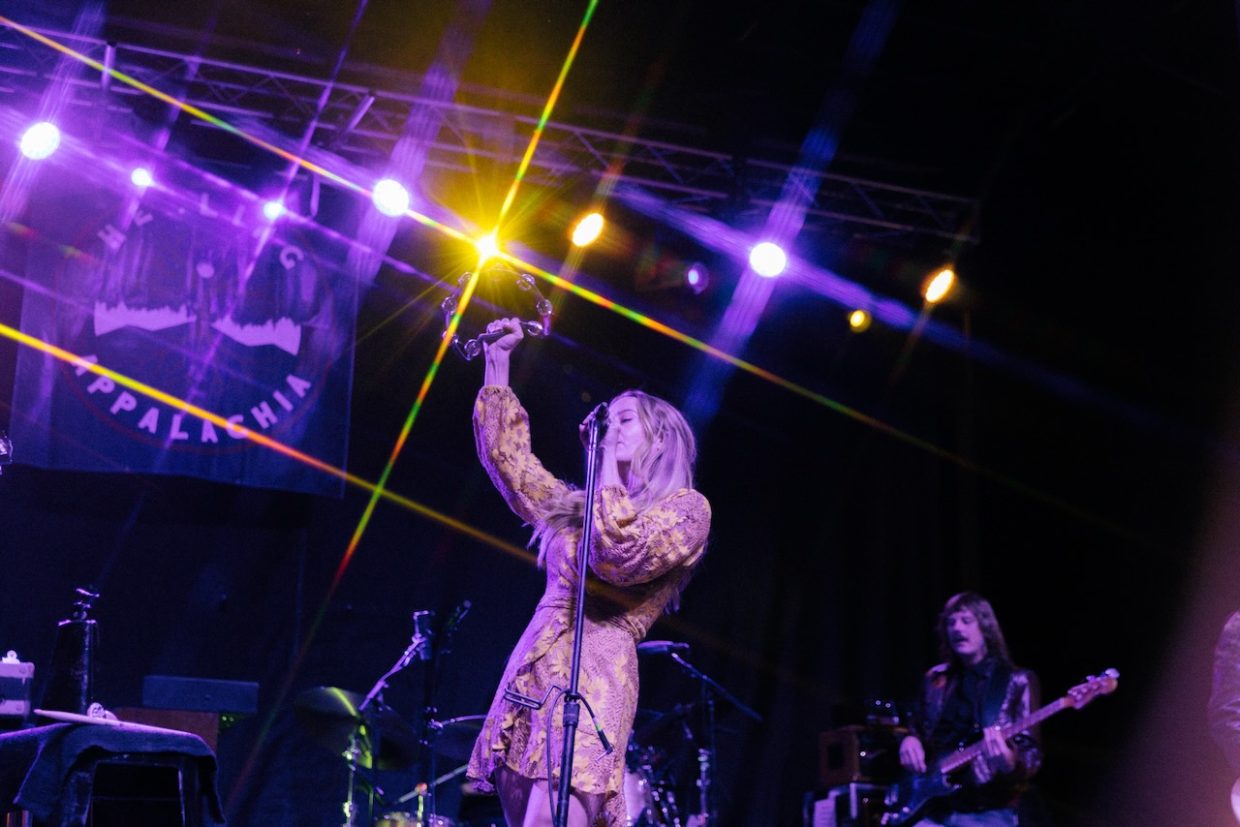
What does a healed Appalachia look like to you?
DL: The problems are many, but the power of collective hope is growing and change is in the air all over Appalachia.
A healed Appalachia spends its riches and resources on mental health and particularly on children, making sure they are loved, nurtured, yet independent, and have all of the coping skills needed. We are now in an era of record kids in foster care and, as we know, childhood trauma is a thread that runs through folks who suffer with Substance Use Disorder. So first order for a healed Appalachia would be a widespread movement and budget shift to help kids in trauma now.
A healed Appalachia is one that has abundant opportunities within a clear line of sight for everyone in the community. A healed Appalachia gives everyone a seat at the table regardless of their past.
I’m a big fan of Brad Smith, who along with John Chambers and others, helping launch and rebrand West Virginia as the start-up state, where we create a really robust small business economy that allows folks here to dream big and launch those dreams here, like Ian, Tyler and the WhizzbangBAM team have done in Huntington, building out a business that builds spiderwebs of creative economy supporting regional musicians and artists.
A healed Appalachia has ample and good-paying sustainable green-energy jobs that pay a living wage and that brings wealth and health and that are not destructive to our beautiful Appalachian Mountains and to the workers.
A healed Appalachia is one with nature, gardening, exercise and healthy lifestyles that bind us to our beloved mountains and valleys.
A healed Appalachia talks less about politics and more about community and being a good neighbor – as the wonderful new Tim O’Brien song, “Cup of Sugar,” suggests we should do.
A healed Appalachia is full of true forgiveness, grace and second chances for folks, making forgiveness not just an often-trotted out word in a book but something real and necessary to heal our communities.
I think that’s probably enough healing or I’ll have to send you a doctor’s bill… [Laughs]
(Editor’s Note: Read part one, our conversation with Hope in the Hills board vice president and WhizzbangBAM founder Ian Thornton, here.)
Photos by Hunter Way / Impact Media
33 Must-See Roots Artists at This Year’s Bourbon & Beyond
Since 2017, Bourbon & Beyond has become one of the BGS Team’s favorite annual events. The music, spirits and food festival held at the Kentucky Expo Center in Louisville, Kentucky, always boasts a roots-forward lineup – on and off the BGS Stage.
In anticipation of Bourbon & Beyond kicking off Thursday, September 14, and running through Sunday, September 17, let’s preview all of the artists gracing our stage throughout the weekend – and we’ll throw in a few we’re excited to catch on the main stages as well.

Limited tickets are still available! Join us this weekend at Bourbon & Beyond in Kentucky. Scroll to see the full schedule for the BGS Stage.
The Arcadian Wild – BGS Stage
We’ve been a fan of this bluegrass-infused Nashville string/Americana band for more than a few years now. In 2021 we invited the Arcadian Wild to perform a Yamaha Artist Session, for which they performed two songs, “Hey Runner” and “Finch In the Pantry.” They hit the BGS Stage at B&B on Sunday.
Armchair Boogie – BGS Stage
We recently caught this jammy Wisconsin outfit, Armchair Boogie, at Earl Scruggs Music Festival, where they burnt down their late-night set. You have two opportunities to see them on the BGS Stage, as they’ll kick us off both Friday and Saturday.
The Avett Brothers – Main Stage
These Saturday headliners need no introduction to our BGS readers and followers, as the Avett Brothers have been a staple of our community for nearly our entire lifespan. Looking at the Bourbon & Beyond lineup poster, it’s hard to believe we didn’t book this entire event!
Jon Batiste – Main Stage
Fresh off the release of a brand new album, World Music Radio, in August, don’t miss Americana renaissance man Jon Batiste when he hits the B&B main stage on Sunday. We can certainly appreciate this Louisianan’s love for blurring genre lines – a perfect fit for Bourbon & Beyond.
Brandi Carlile – Main Stage
Let’s return to MerleFest 2019, the last time we had a stage at a festival Brandi Carlile headlined – and she brought her pals the Avetts out to sing “Murder In the City.” A BGS classic! We’ll be running from the BGS Stage to see Brandi on Thursday evening for sure.
Brandy Clark – Main Stage
Appropriate that Brandi and Brandy would end up as list neighbors and both on the Bourbon & Beyond main stage lineup, as the former produced the latter’s stunning new self-titled album. Clark has been a Music Row mainstay as an artist and songwriter for decades, but with her new record and her hit Broadway show, Shucked (penned with Shane McAnally), she’s finally getting her well-deserved flowers.
Clay Street Unit – BGS Stage
We crossed paths with Denver, Colorado, country-folk-grass group Clay Street Unit earlier this year at WinterWonderGrass, so we’re more than pleased to have them on the BGS Stage on Thursday afternoon.
Michael Cleveland & Flamekeeper – BGS Stage
Fiddlin’ phenom Michael Cleveland has performed for BGS at Bourbon & Beyond before, but with his new critically-acclaimed album, Lovin’ of the Game, and his recent selection as our March 2023 Artist of the Month, it’s the perfect time to get him back to Louisville. It’s basically home turf for Cleveland, and his set Thursday evening is not to be missed.
The Cleverlys – BGS Stage
Bluegrass’s preeminent song-interpreters – or song skewer-ers, depending on how you look at it – are a humorous hoot, bolstered by fantastic picking and on-stage personas pulled straight out of a caricature book. If you’ve never seen the Cleverlys live and in person, now’s your chance to catch covers like this waltz version of Radiohead’s “Creep” like you’ve never heard them before.
Della Mae – BGS Stage
Our old pals Della Mae brought an outsized energy and charisma with them to their sets at Earl Scruggs Music Festival a couple of weeks ago, wowing the crowds in North Carolina. Now the groundbreaking bluegrass foursome set their sites on the BGS Stage at Bourbon & Beyond. There’s a reason why this group of all women remains a stalwart in bluegrass, old-time and Americana.
Myron Elkins – BGS Stage
If you’re not familiar with guitarist and Americana alt-rocker Myron Elkins, you’re about to be! His debut album, Factories, Farms & Amphetamines, was produced by superstar musician-engineer-producer Dave Cobb and released on Elektra. Catch him as he ascends on the BGS Stage on Thursday, kicking off the entire weekend for us at 12:30 p.m.
Fantastic Negrito – Main Stage
Fantastic Negrito is a one-of-a-kind performer. An expert in blues – and a purveyor of post-blues, neo-blues, and the tastiest of fringe Americana – Fantastic Negrito occupies a stage like no other. He’s a Bourbon & Beyond veteran as well, and his past performances are seared into our memories of this amazing event. Do not miss!
First Aid Kit – Main Stage
Indie folk duo First Aid Kit, made up of Swedish sisters Klara and Johanna Söderberg, are a favorite of BGS readers – the kind of readers who equally love Bill Monroe, Nickel Creek and boygenius. Get a taste at their Saturday main stage set or check out our 2018 feature on the group.
Drew Holcomb & the Neighbors – Main Stage
Don’t you just wish Drew and Ellie Holcomb and the Neighbors were your neighbors? (Sigh…) It just seems like it would be lovely. At any rate, you can catch up with these fine folks from next door on the main stage at B&B on Thursday.
Brittany Howard – Main Stage
A god of rock and roll incarnate, Brittany Howard’s particular brand of roots rock is enormous and will fill the Bourbon & Beyond main stage and then some. If you haven’t caught the Alabama Shakes front person recently, now is your chance. Howard hits the main stage on Friday.
The Lil’ Smokies – BGS Stage
Formed in Montana, the Lil’ Smokies combine so many contemporary bluegrass influences into a Western-influenced, jam-forward sound. We enjoy every chance we have to cross paths with this group – if you miss their set at Bourbon & Beyond, catch the Lil’ Smokies at AmericanaFest in Nashville very soon.
Lindsay Lou – BGS Stage
Roots singer-songwriter Lindsay Lou is entering yet another new era of her career, with her signing to Kill Rock Stars and upcoming album, Queen of Time, due out later this month. At Bourbon & Beyond you’ll have two chances to hear current and past sounds from Lindsay Lou – on both Saturday and Sunday on the BGS Stage.
The Lone Bellow – Main Stage
One of our all-time favorite rootsy, folky, string band trios. It’s been too long since we’ve reconnected with our friends The Lone Bellow and we’re grateful B&B will give us that opportunity when they play the main stage on Thursday.
Lola Kirke – BGS Stage
Lola Kirke, who you can see on Friday on the BGS Stage at B&B, is an accomplished actress whose dream is to be a country singer – dream, achieved! She makes joyous, lyrical, story-rich music that pulls as much from country’s grit as its glitz. (And an appearance from lineup-mates First Aid Kit on “All My Exes Live in L.A.” is the cherry on top.)
Joy Oladokun – Main Stage
Intricate and involved indie folk is Joy Oladokun’s medium, her songs dripping with pop sensibilities and led by an agnostic approach to genre that builds on work by predecessors like Aimee Mann, Ani DiFranco, Tracy Chapman, k.d. lang, and many more. Oladokun continues to rise through the music-industry ranks, her latest album Proof of Life building more momentum off the ex-evangelical’s heart-forward, earnest, stoner indie pop.
Old Crow Medicine Show – Main Stage
Old Crow Medicine Show bring the Jubilee to Bourbon & Beyond! Don’t miss the party as the world’s most renowned and rollicking string band celebrates their just-released album on the B&B main stage on Saturday. And keep an eye out for a BGS feature on the new record coming soon to the site.
Pixie & The Partygrass Boys – BGS Stage
Another of our WinterWonderGrass pals headed to Bourbon & Beyond! Catch Pixie & the Partygrass Boys on the BGS Stage kicking off our final day of music on Sunday. You’ll certainly enjoy the party – unless you’re a fascist, in which case, avoid our stage altogether or you might get eaten by some chickens.
Darrell Scott Band – Main Stage
Darrell Scott is a musical shapeshifter, effortlessly moving from Music Row country to dyed-in-the-wool bluegrass to rocking and rolling. At his Bourbon & Beyond main stage set on Friday, you’re sure to hear new tracks from his recent album, Old Cane Back Rocker, made with the Darrell Scott String Band, as well as original hits like “It’s a Great Day to Be Alive” and some tasty covers, too. We never get enough of Darrell Scott! (Watch for an interview with Scott coming to BGS soon.)
Frank Solivan & Dirty Kitchen – BGS Stage
If this is the kitchen dirty, let’s never clean it up! Frank Solivan & Dirty Kitchen are a shredding bluegrass jam band certainly worth sticking around for on Sunday evening. You’ll hear music from their most recent Compass Records album, Hold On, which recently turned one year old, and plenty of mind-(and string-)bending solos.
Mavis Staples – Main Stage
Put the legendary Mavis Staples’ main stage set (Friday, 3:50 p.m., Oak Stage) on your calendar and circle it. And underline it. And set a push notification. We are grateful every single time we get to occupy the same space and air as Mavis, and this time will be no different. It’s a privilege to walk the earth at the same time as this civil rights leader and musical oracle!
Billy Strings – Main Stage
Not so long ago our old friend Billy Strings would have been playing our BGS Stage, but not anymore, this flatpickin’ global sensation has decidedly hit the big time! We’ve so enjoyed watching Billy move up and up and up in the world and we can’t wait to see his main stage set at Bourbon & Beyond Thursday night. With such a stacked lineup, the special guest opportunities are exciting and limitless.
Town Mountain – BGS Stage
Western North Carolina string band Town Mountain have built up their sound over the past few years to where they feel and sound something like Ricky Skaggs in his country days — bluegrass bones, but fleshed out country. Their songs still go by you like a rousing honky tonk dance band, bluegrass or no, but with spit and polish and thousands of miles under their belts. Worth an add to your B&B to-do list!
Twisted Pine – BGS Stage
Another group that blew us away at Earl Scruggs Music Festival, Twisted Pine turns the jamgrass model on its ear, building their vibey, virtuosic songs and tunes with as much jazz interwoven as bluegrass, old-time, and country. They’re like Lake Street Dive and Crooked Still, mashed up together and lingering a bit longer in string band traditions – from across the Americana continuum – before taking off. Plus, bluegrass just needs more flute, right? See them Friday on the BGS Stage.
Two Runner – BGS Stage
We’re glad to be bringing some California sounds to Kentucky with Two Runner, old-time and Americana duo of Paige Anderson and Emilie Rose coming to B&B. They bring to mind duos like Hazel & Alice and Anna & Elizabeth, combining country harmonies and old-time instrumentation – all dragged through the coastal evergreen woods of Northern California. Hear them Thursday on the BGS Stage.
Dan Tyminski – BGS Stage
Dan Tyminski headlining a BGS Stage is simply a dream come true! This multi-hyphenate, lifelong bluegrasser has been a member of so many seminal and groundbreaking bluegrass groups and projects. He’s had a full career within and outside of bluegrass, but lately has returned to the genre that made him with a new band, a new album, God Fearing Heathen, excellent songs, and that voice – fit for George Clooney.
Kelsey Waldon – BGS Stage
Kelsey Waldon on her home turf! Though she hails from West Kentucky, the entire state is certainly this country singer-songwriter’s domain. We’ve collaborated quite a bit with Waldon across her career, and are looking forward to her headline set closing out our first day of Bourbon & Beyond on the BGS Stage. She may be country, but her bluegrass roots run deep – and will be on full display at B&B for sure.
Sunny War – BGS Stage
One of our favorite guitarists of the last several years has released one of our favorite albums of 2023, Anarchist Gospel. If you’re unfamiliar with her work, you won’t want to miss Sunny War perform on the BGS Stage on Saturday. Her right hand is confounding and inspiring, an often textural and tone-setting device in her bigger sounding recent songs that combine punk, blues, indie and more. Not to be missed!
Hailey Whitters – Main Stage
It’s no secret BGS loves some good country. Hailey Whitters is certainly some of the best to come out of Music Row in recent memory, releasing radio-ready bops that are fun and exuberant, yes, but also have a rich and subversive well of influences, content and production styles. That Whitters is connected with all the best pickers and singers in Nashville and has a penchant for bluegrass are nice little details to remember about this TikTok phenom. Worth a mosey to the main stage on Sunday, certainly!
The Bluegrass Situation Stage – Daily Schedule
Thursday, September 14
5:45 p.m. – Kelsey Waldon
4:15 p.m. – Michael Cleveland & Flamekeeper
3 p.m. – Two Runner
1:45 p.m. – Clay Street Unit
12:30 p.m. – Myron Elkins
Friday, September 15
5:45 p.m. – The Lil’ Smokies
4:15 p.m. – The Cleverlys
3 p.m. – Twisted Pine
1:45 p.m. – Lola Kirke
12:30 p.m. – Armchair Boogie
Saturday, September 16
5:45 p.m. – Town Mountain
4:15 p.m. – Della Mae
3 p.m. – Lindsay Lou
1:45 p.m. – Sunny War
12:30 p.m. – Armchair Boogie
Sunday, September 17
5:45 p.m. – Dan Tyminski
4:15 p.m. – Frank Solivan & Dirty Kitchen
3 p.m. – The Arcadian Wild
1:45 p.m.- Lindsay Lou
12:30 p.m. – Pixie & The Partygrass Boys
Purchase your Bourbon & Beyond tickets here.
BGS Returns to Louisville for Sixth Consecutive Bourbon & Beyond
BGS is excited to announce the full lineup and schedule for our Bluegrass Situation Stage at Louisville, Kentucky’s Bourbon & Beyond – for our sixth year in a row! Since 2017, BGS has curated a bluegrass-forward roster for the premier bourbon, food, and music festival’s only music stage outside of their main stages, Oak and Barrel. The 2023 edition of Bourbon & Beyond will be held September 14 through 17 at the Highland Festival Grounds at the Kentucky Expo Center. Tickets are still available.
Each evening of the event, the BGS Stage will culminate with performances by Kelsey Waldon (Thursday), The Lil’ Smokies (Friday), Town Mountain (Saturday) and Dan Tyminski (Sunday). The full schedule includes performances by Michael Cleveland & Flamekeeper, Lindsay Lou, The Arcadian Wild, Della Mae, Sunny War, Twisted Pine and more. See daily BGS Stage schedules below.
This year, as in the past, there are acts and bands all across the Bourbon & Beyond schedule that feel like they were pulled directly from the pages and stories of BGS. On the Oak and Barrel stage roots music fans can hear artists like Jon Batiste, Billy Strings, Midland, Brandi Carlile, Brittany Howard, Joy Oladokun, Darrell Scott Band, Fantastic Negrito, Hailey Whitters, Brandy Clark, Mavis Staples, the Avett Brothers, Old Crow Medicine Show, and so many more.
But that’s not all! For the foodies and bourbon hounds alike, there will be wall-to-wall culinary demonstrations, bourbon experiences, and more featuring celebrity chefs such as Edward Lee, Amanda Freitag, Chris Santos, Sara Bradley, bourbon expert Fred Minnick, and many others. If you’re curious which Kentucky straight bourbon whiskeys will be available for sipping and guzzling at the Big Bourbon Bar, it’s pretty much every distiller you could ever crave: Angel’s Envy, Bardstown, Brother’s Bond, Bulleit, Doc Swinson’s Whiskey Collection, Elijah Craig, Four Roses, George Dickel, Green River, Heaven’s Door, Jack Daniel’s, Jefferson’s, Kentucky Peerless, Larceny, Legent, Maker’s 46, Michter’s, Middle West Spirits, Monk’s Road, Old Forester, Rabbit Hole, Resilient Bottled in Bond, Starlight Distillery, Wilderness Trail and Willett Distillery.
Bourbon and bluegrass and beyond – what more do you need? We hope you will make plans to join us in Louisville for the 2023 edition of Bourbon & Beyond!
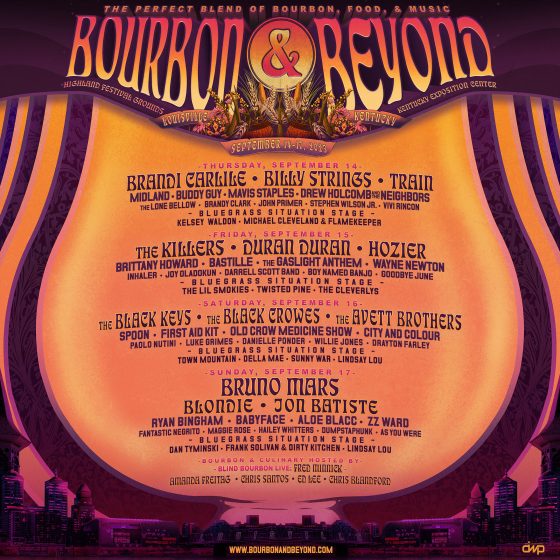
The Bluegrass Situation Stage – Daily Schedule
Thursday, September 14
5:45 p.m. – Kelsey Waldon
4:15 p.m. – Michael Cleveland & Flamekeeper
3 p.m. – Two Runner
1:45 p.m. – Clay Street Unit
12:30 p.m. – Myron Elkins
Friday, September 15
5:45 p.m. – The Lil’ Smokies
4:15 p.m. – The Cleverlys
3 p.m. – Twisted Pine
1:45 p.m. – Lola Kirke
12:30 p.m. – Armchair Boogie
Saturday, September 16
5:45 p.m. – Town Mountain
4:15 p.m. – Della Mae
3 p.m. – Lindsay Lou
1:45 p.m. – Sunny War
12:30 p.m. – Armchair Boogie
Sunday, September 17
5:45 p.m. – Dan Tyminski
4:15 p.m. – Frank Solivan & Dirty Kitchen
3 p.m. – The Arcadian Wild
1:45 p.m.- Lindsay Lou
12:30 p.m. – Pixie & The Partygrass Boys
Photos L-R: Dan Tyminski by Scott Simontacchi; Kelsey Waldon courtesy of the artist; Michael Cleveland by Amy Richmond
